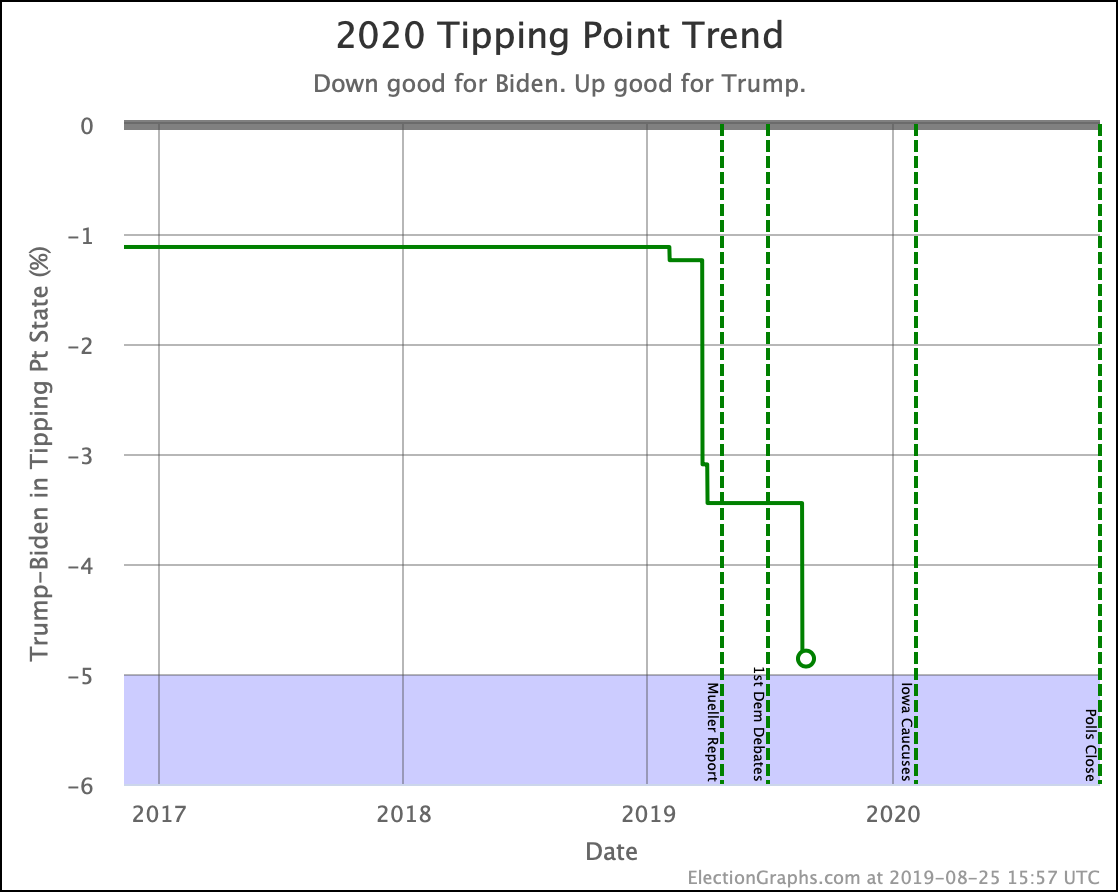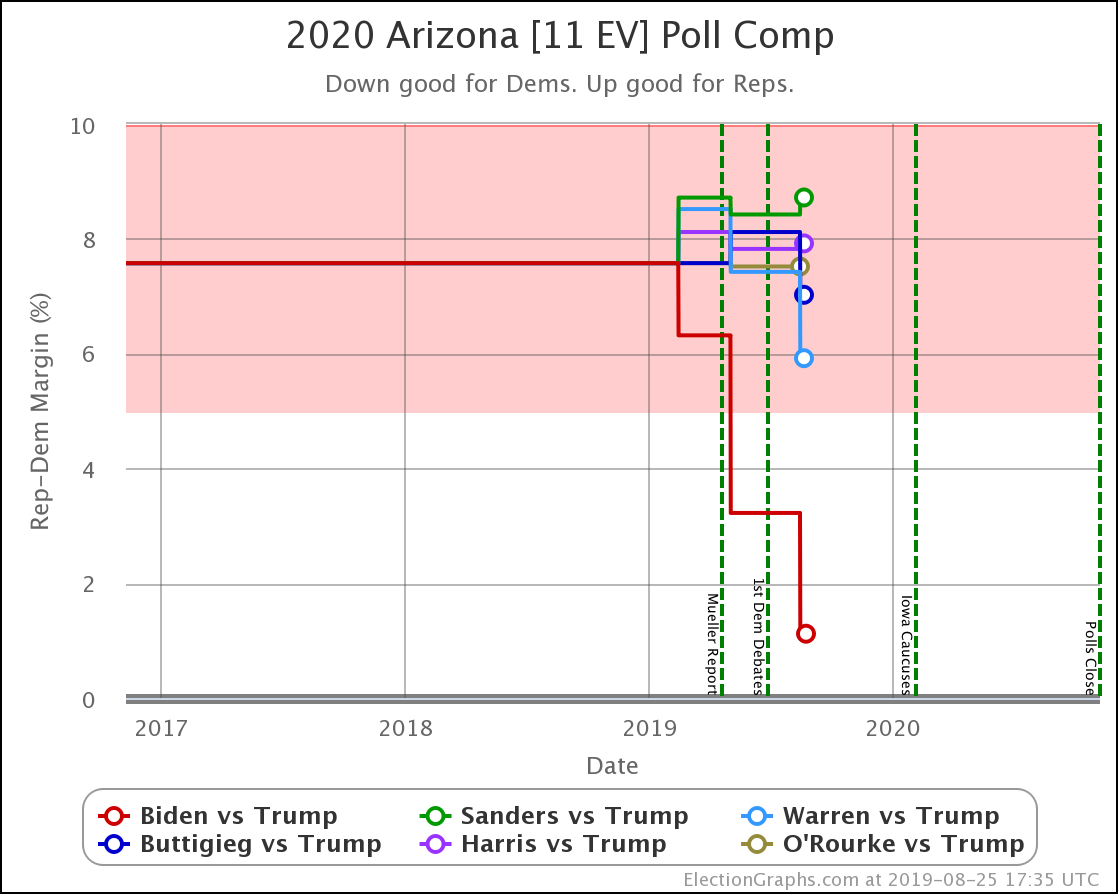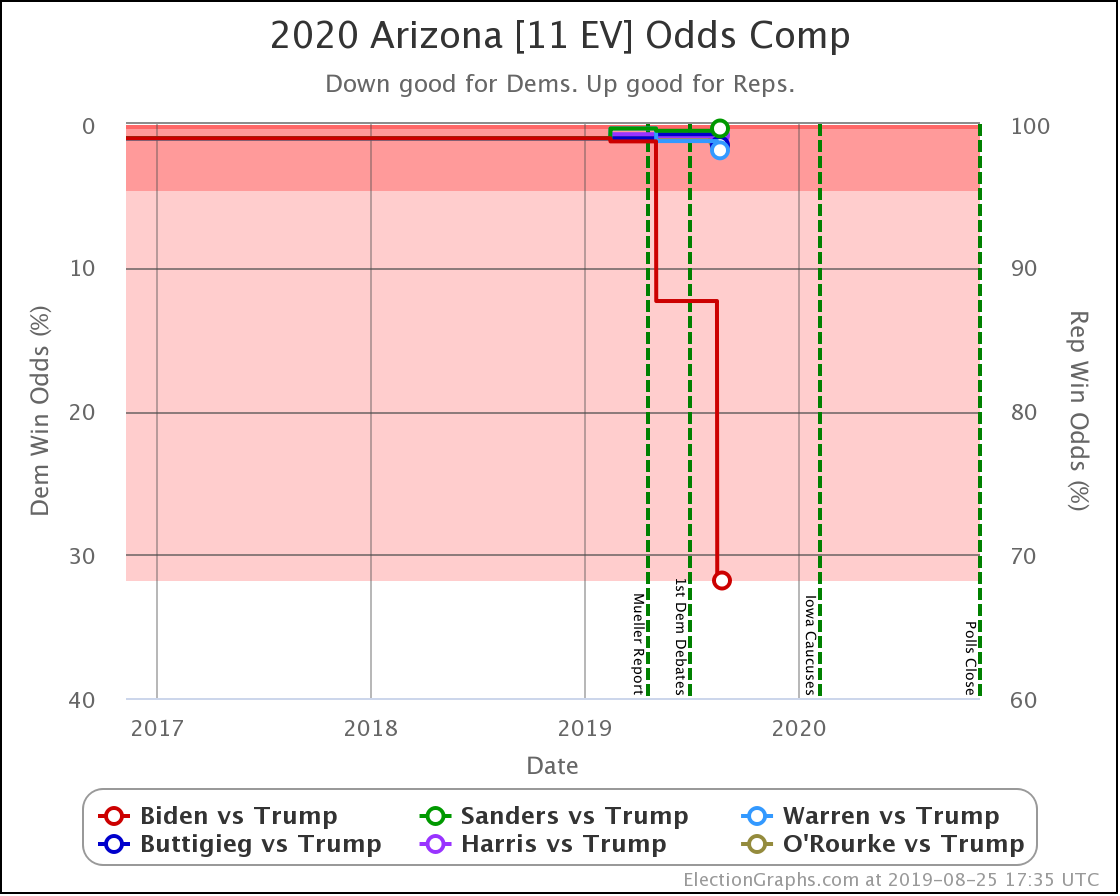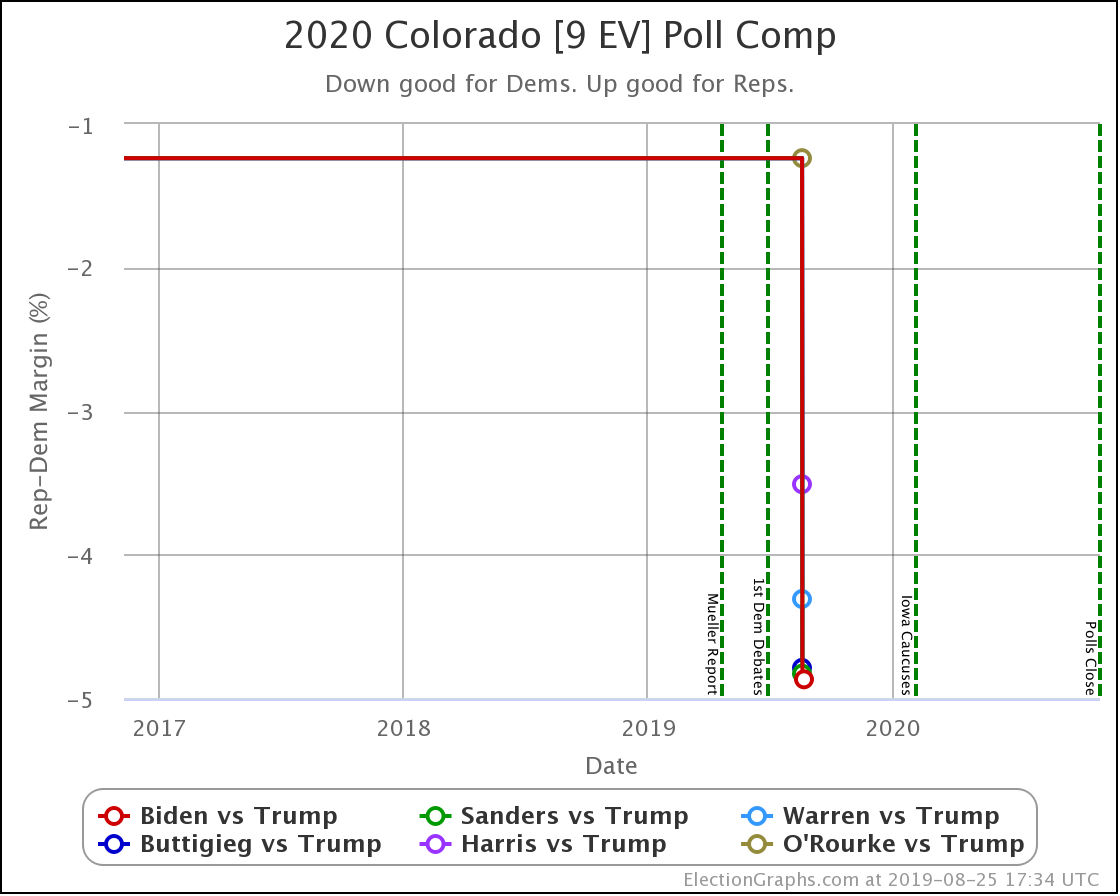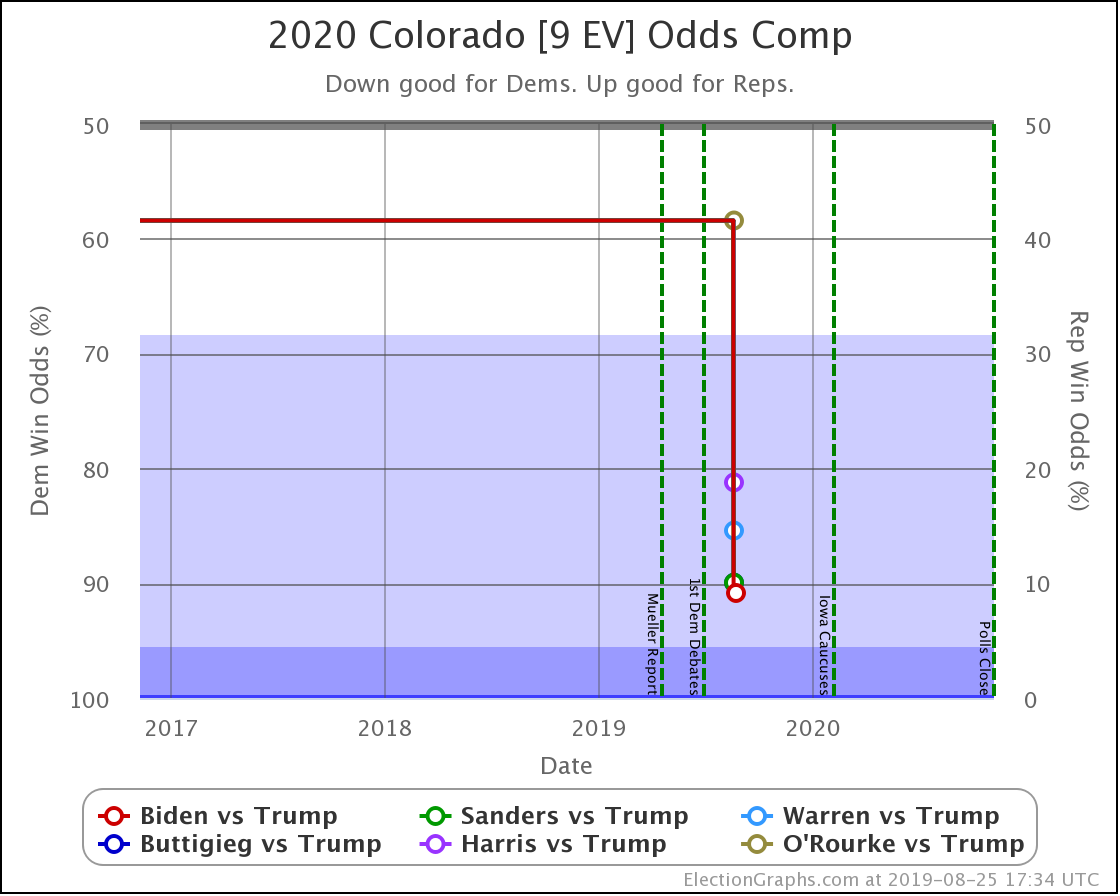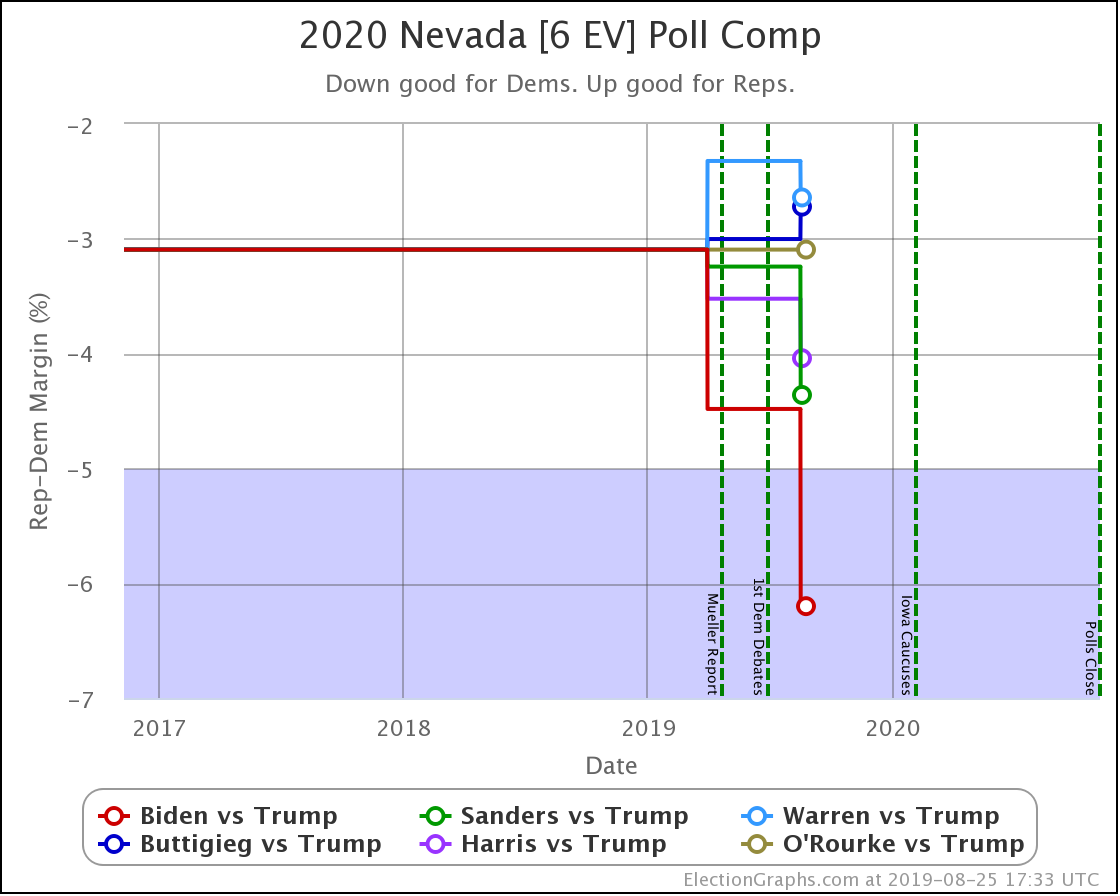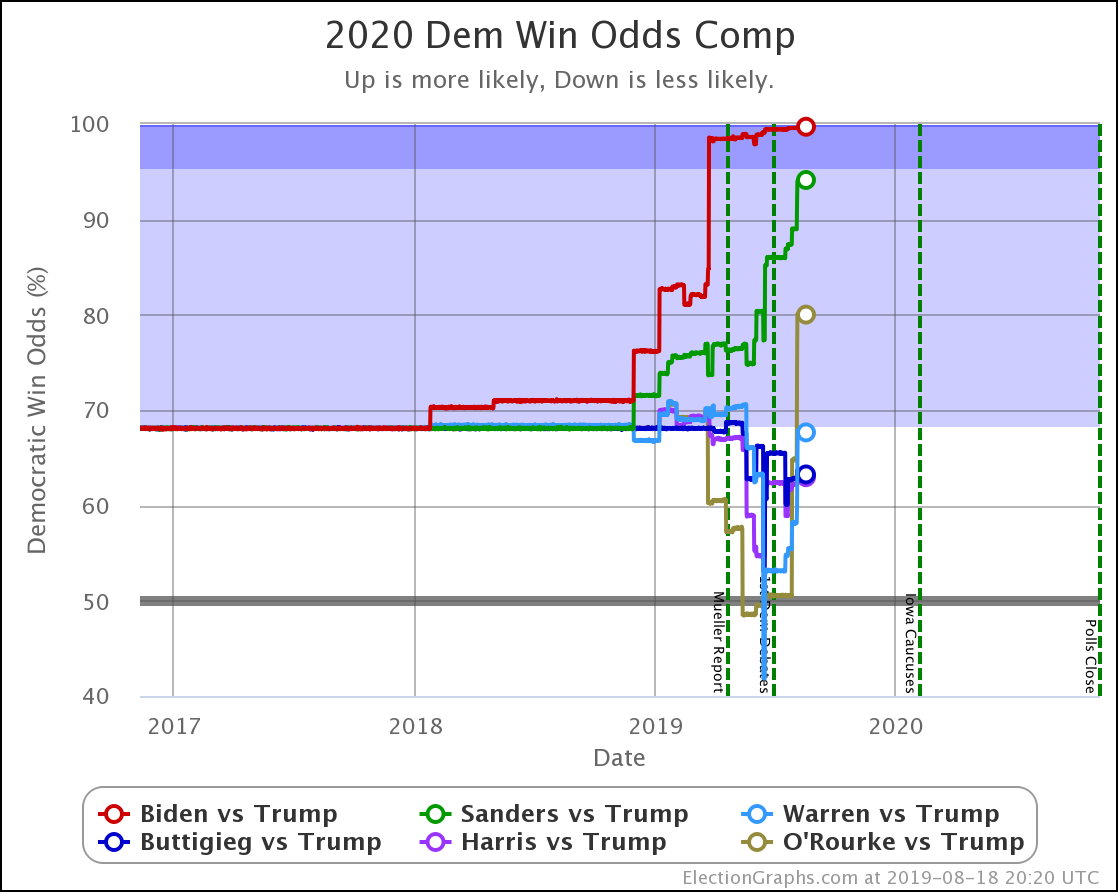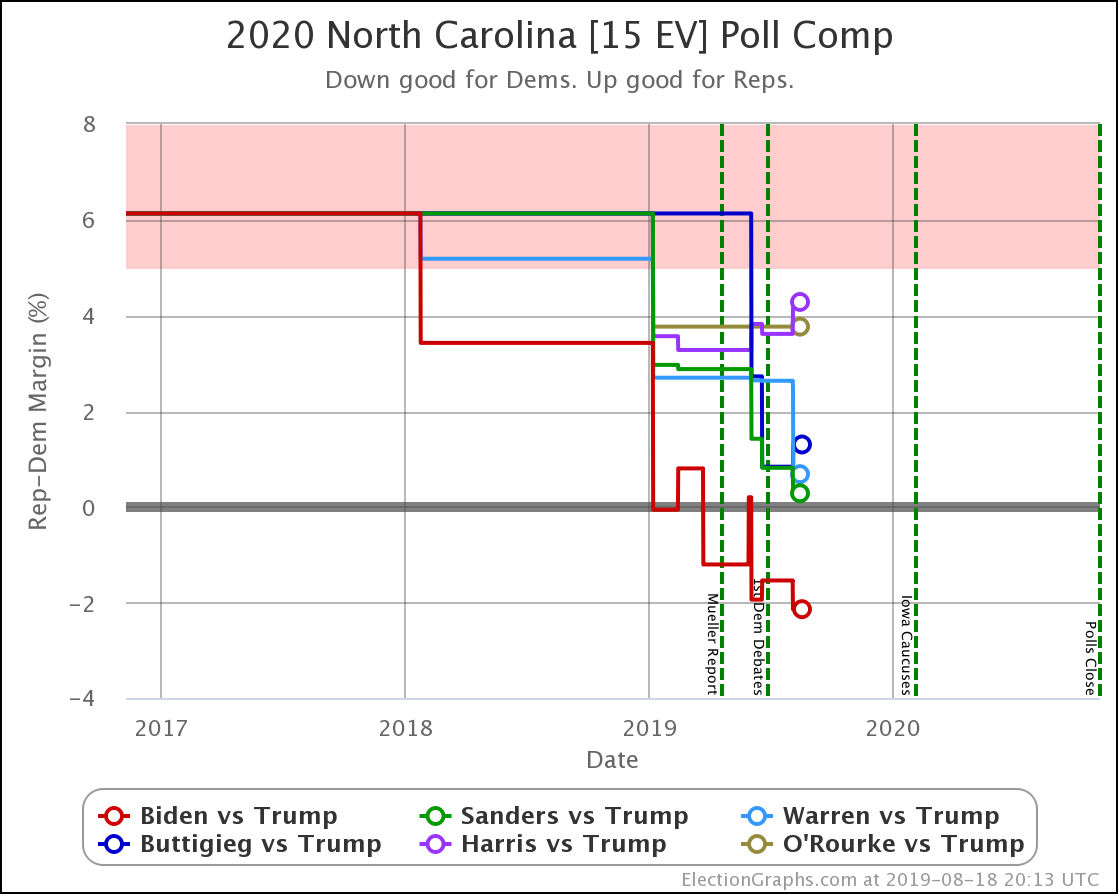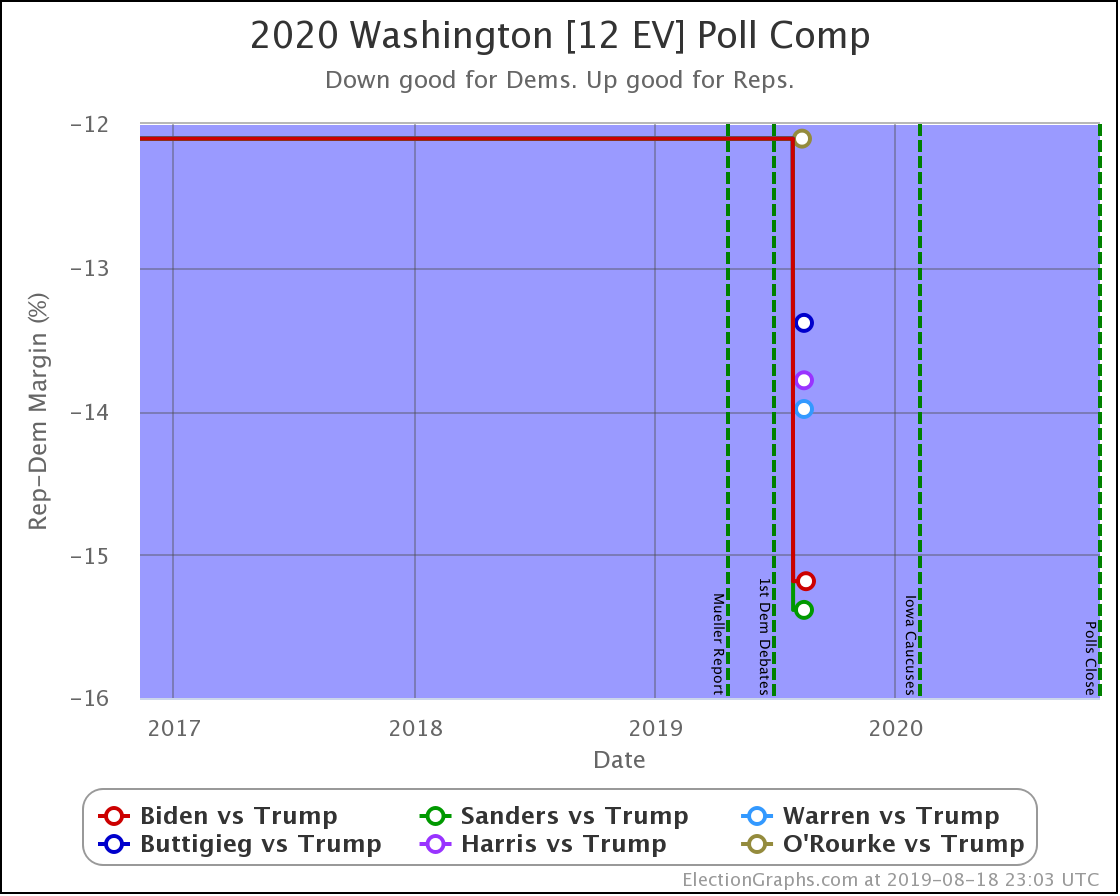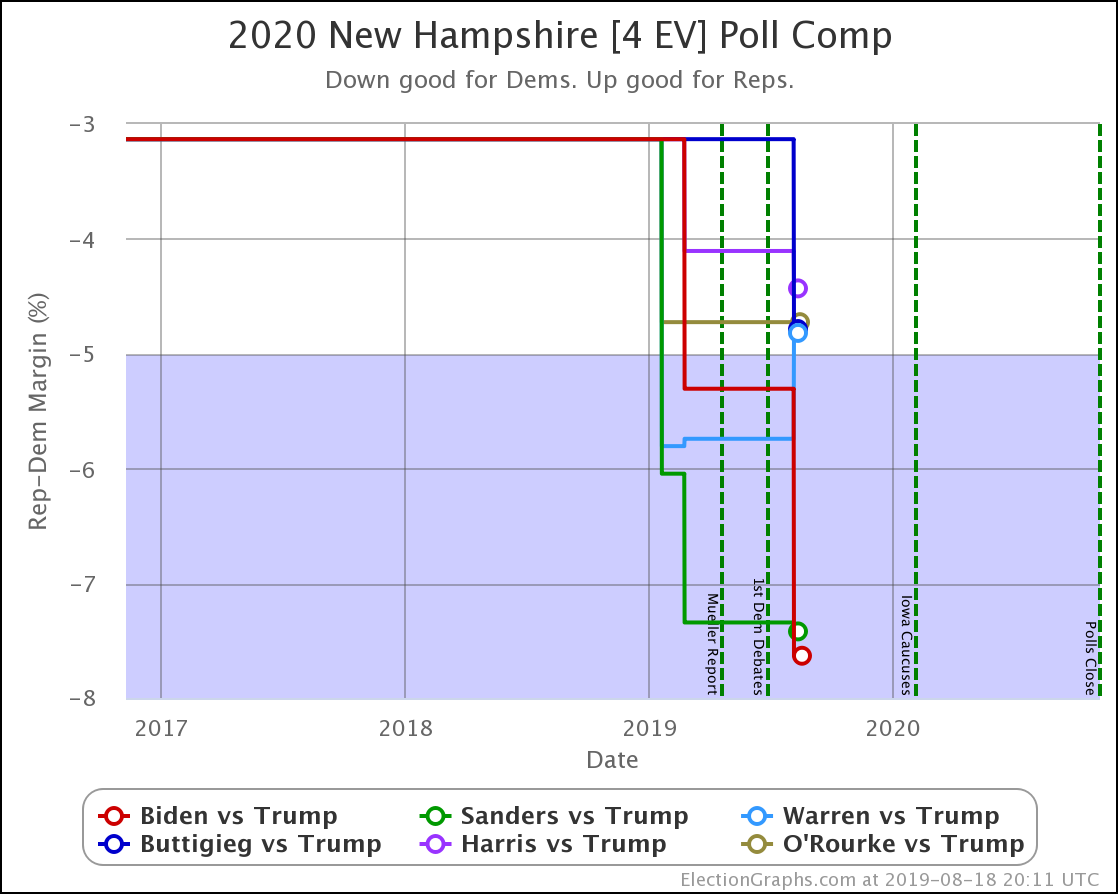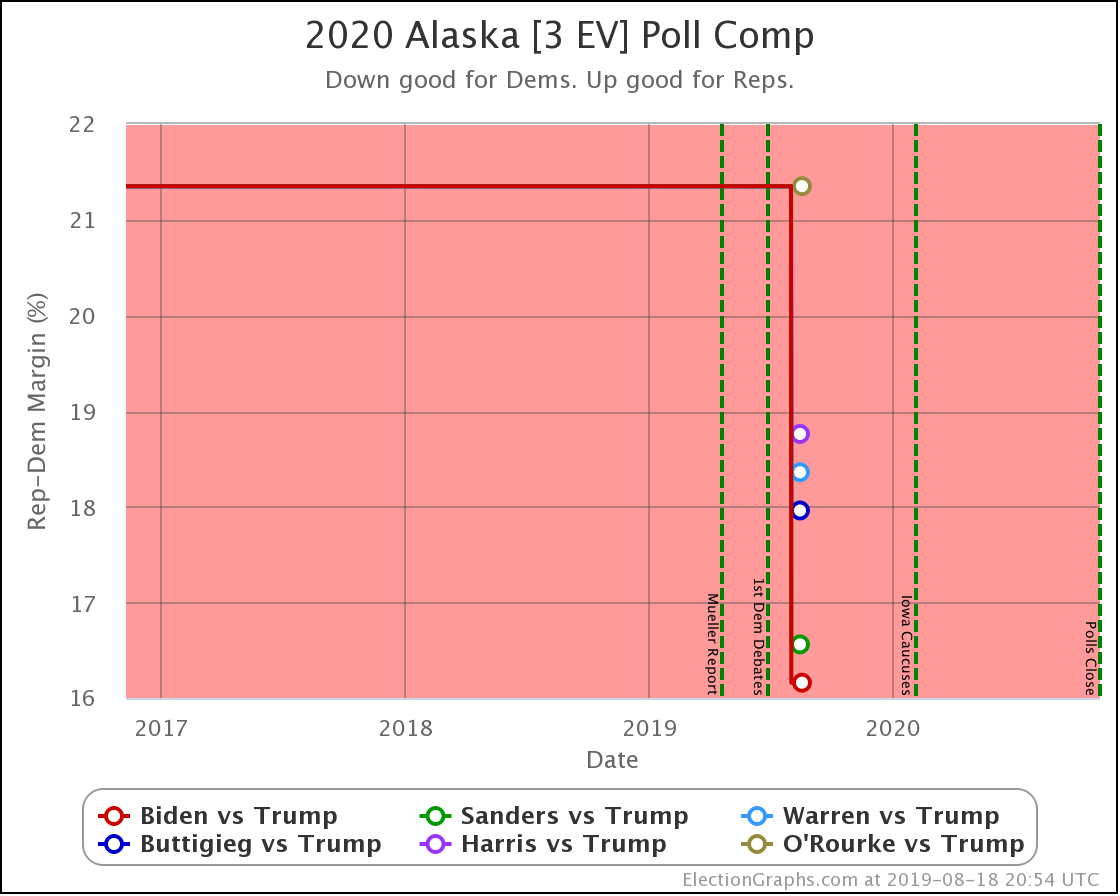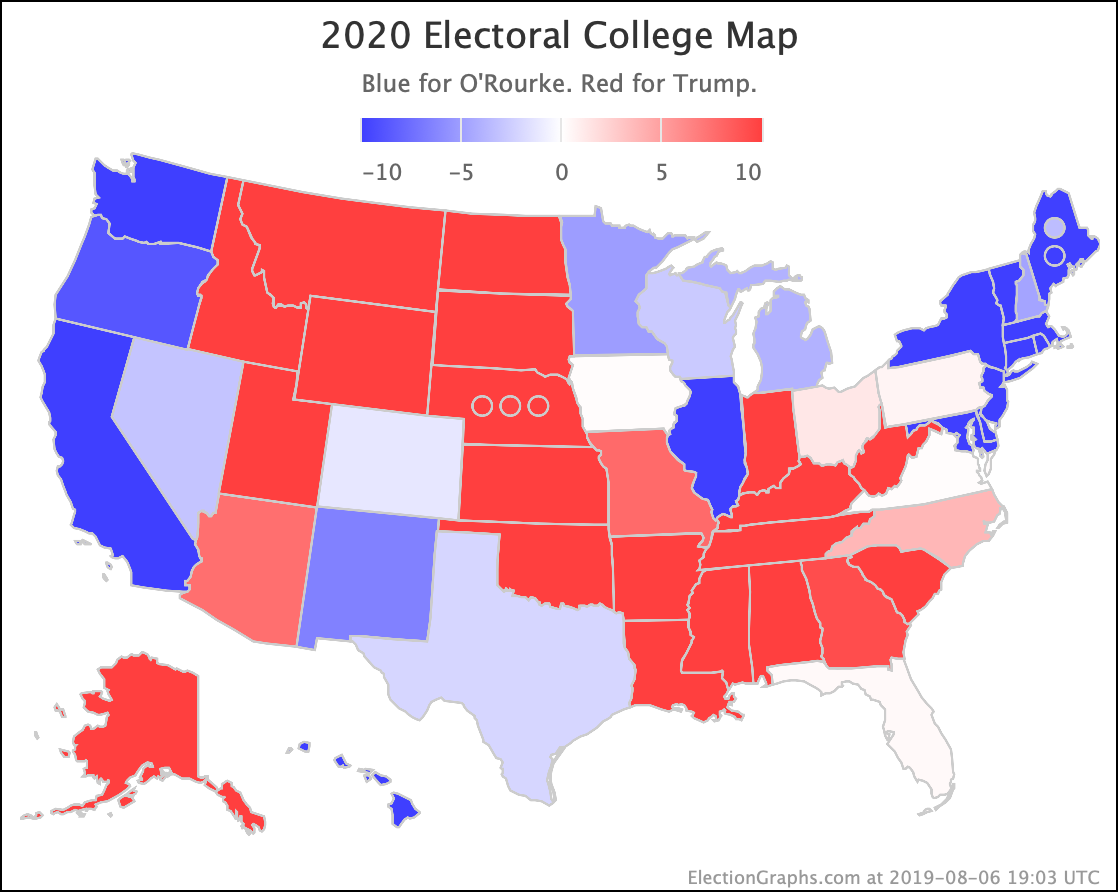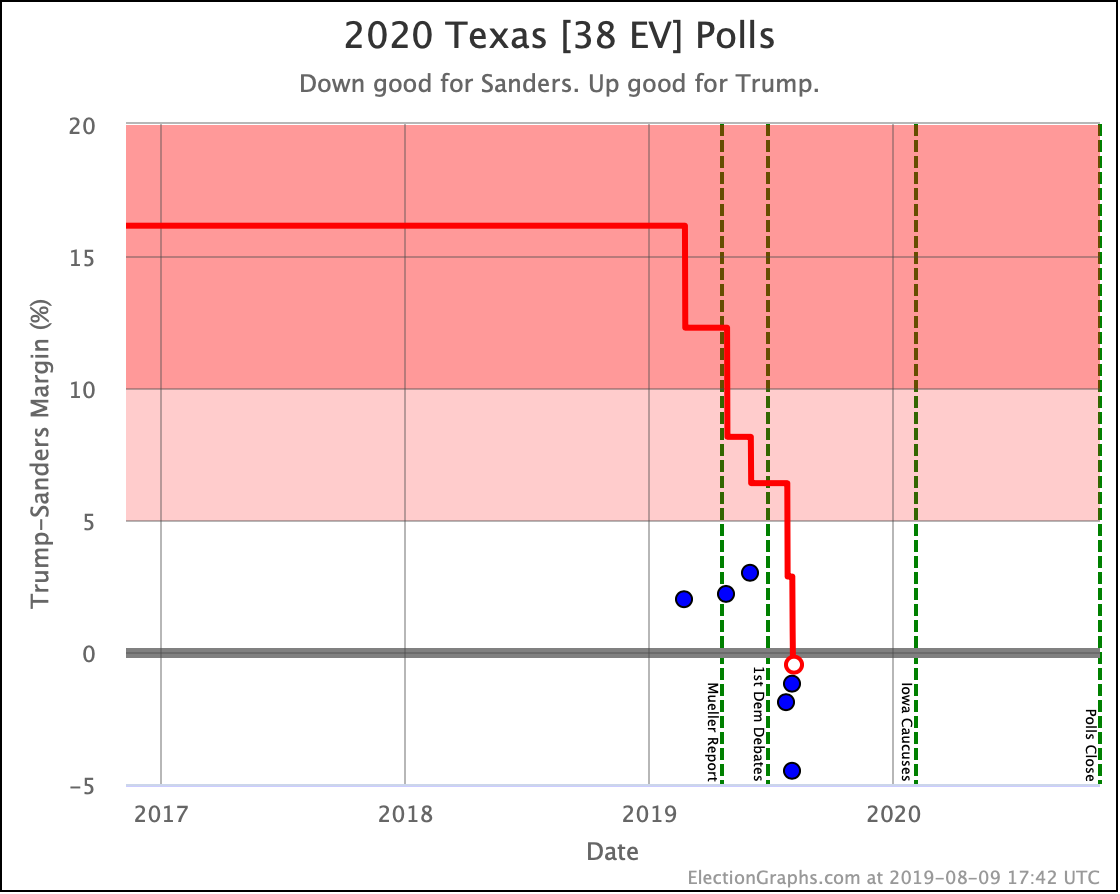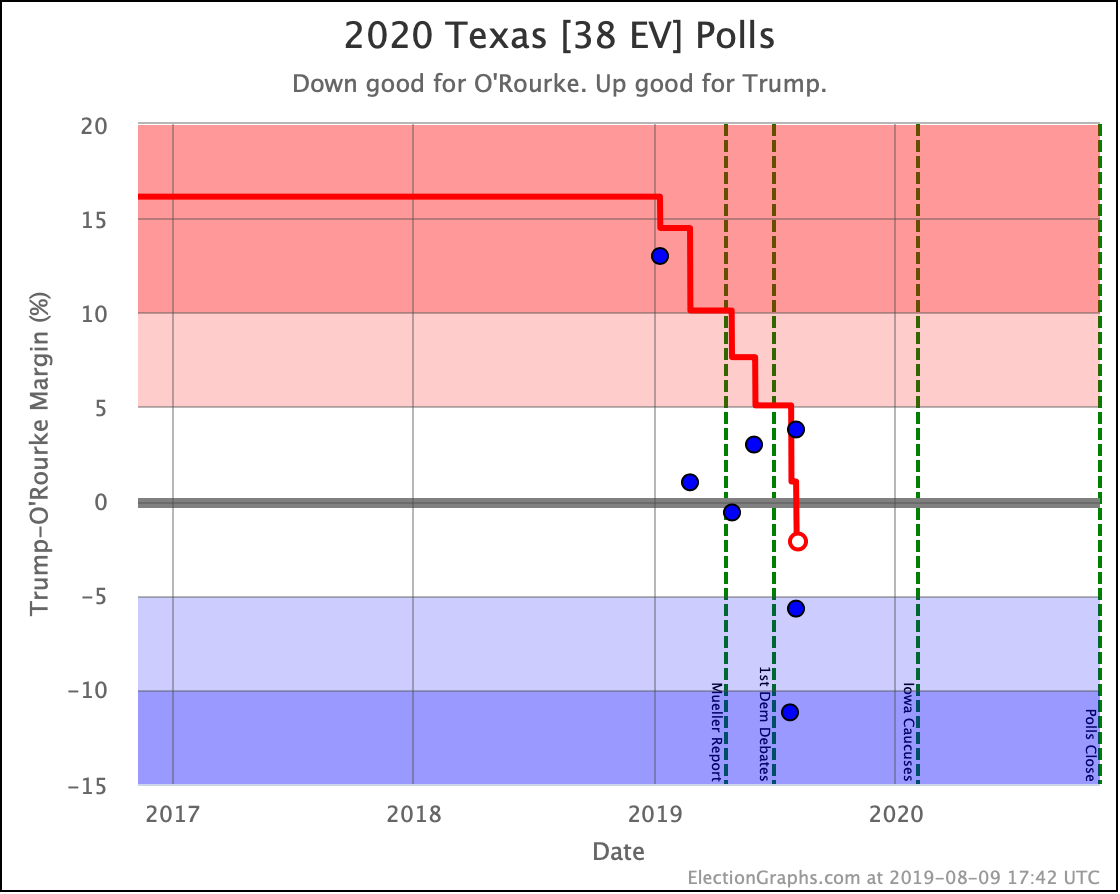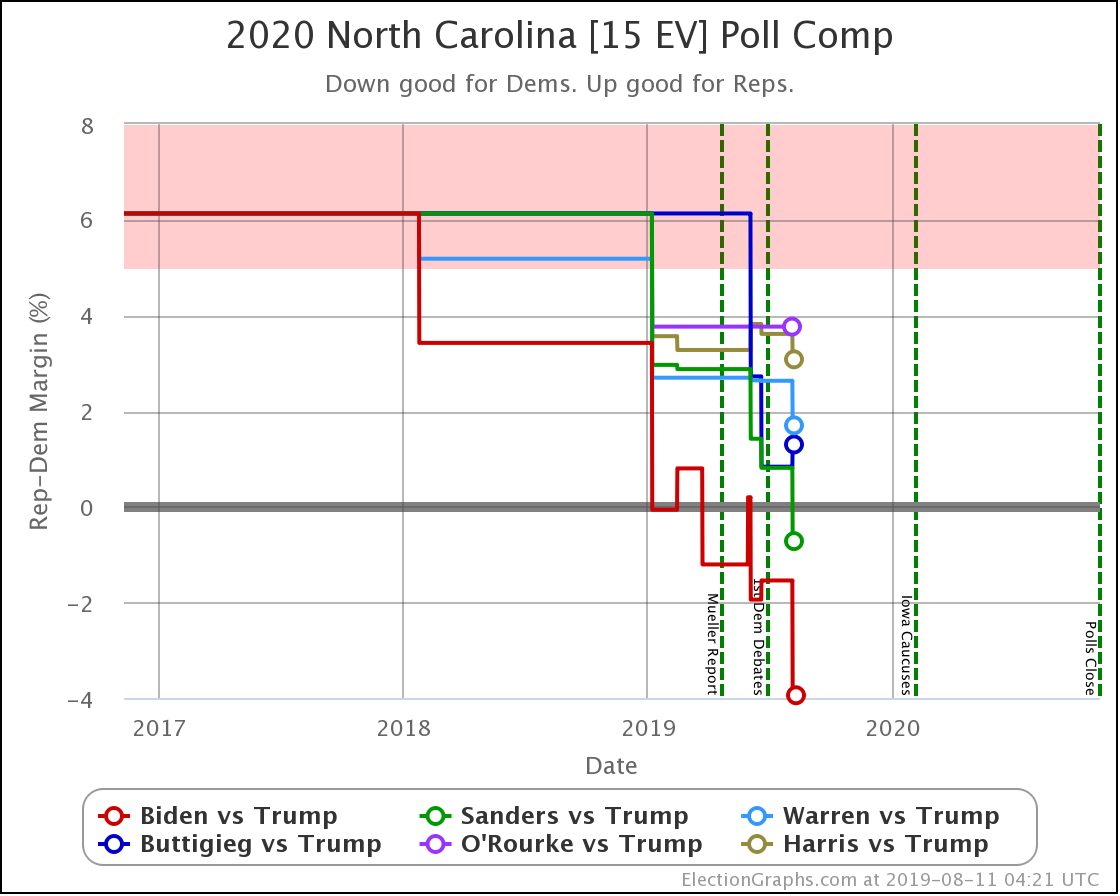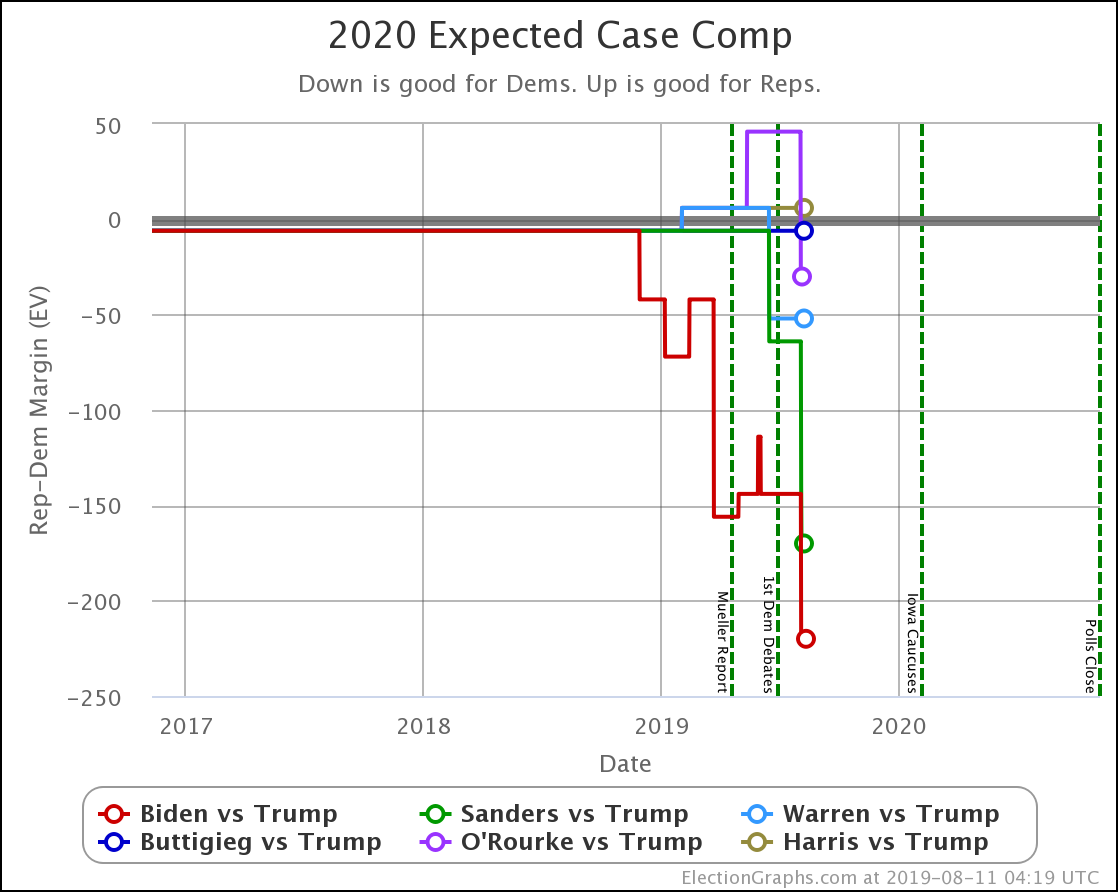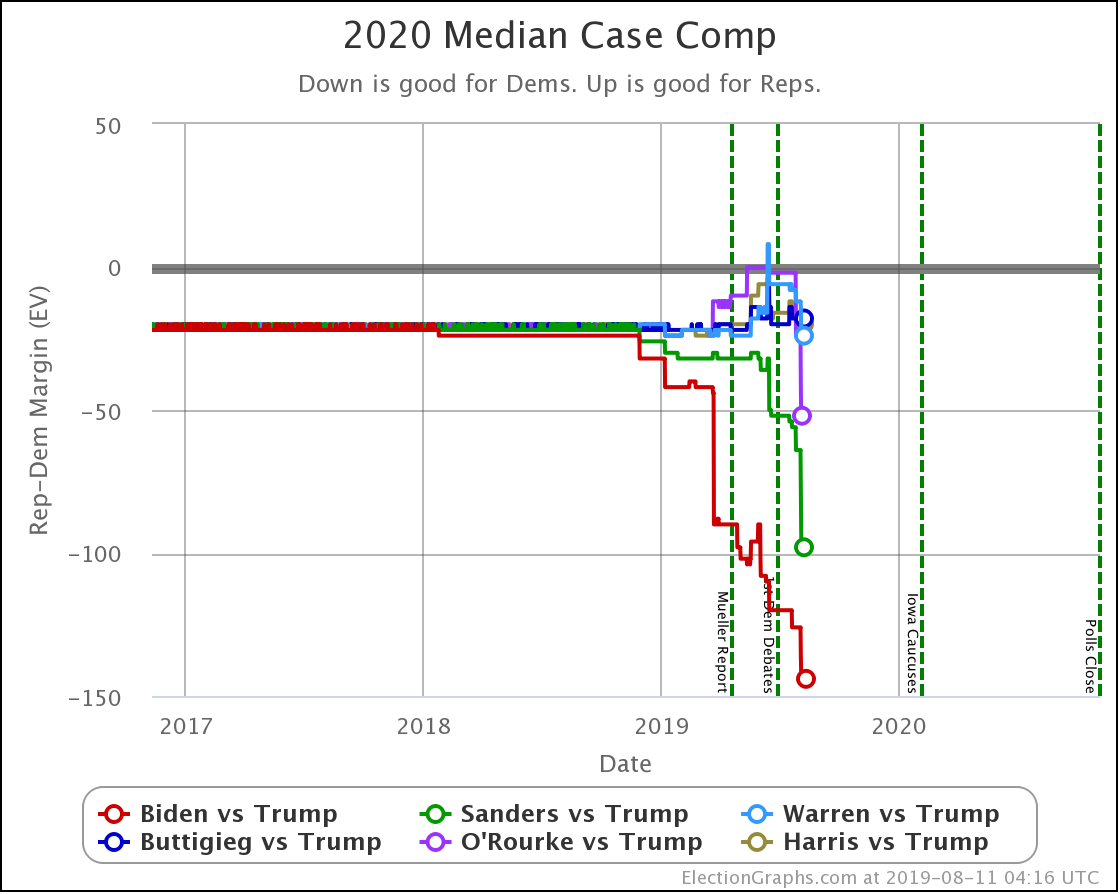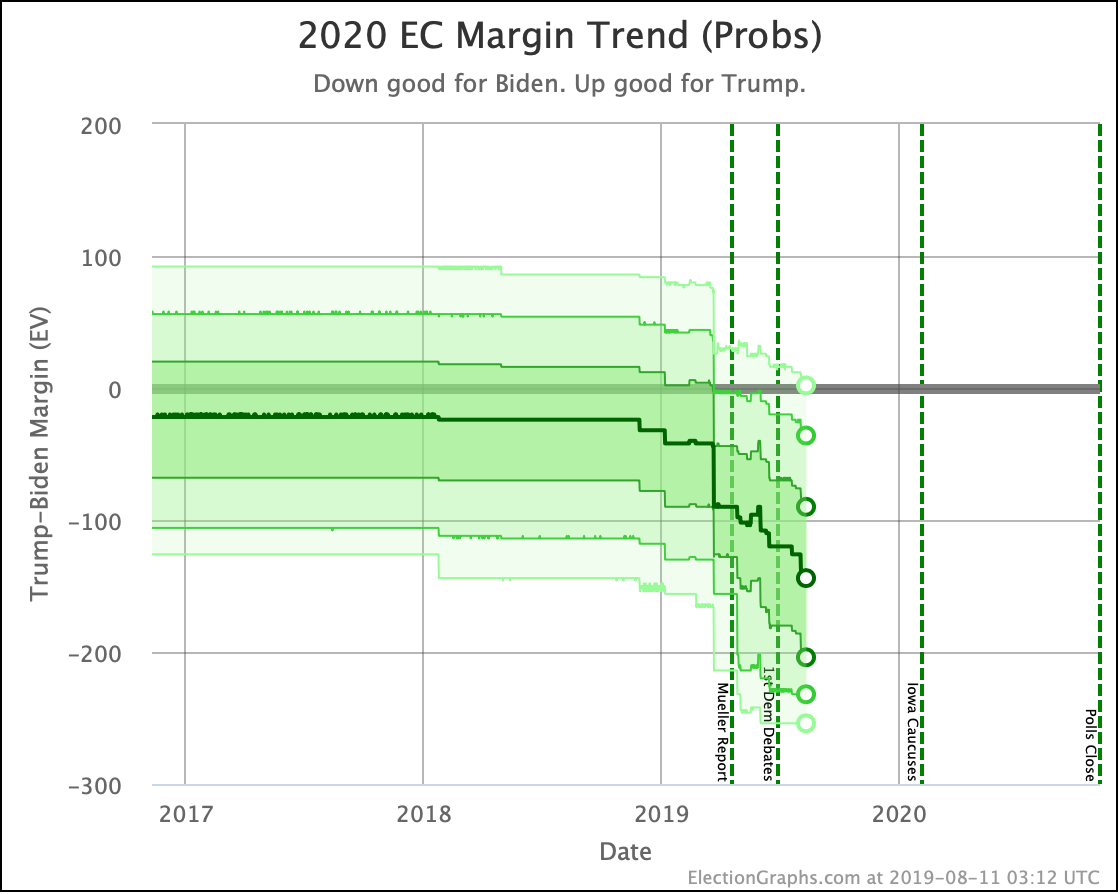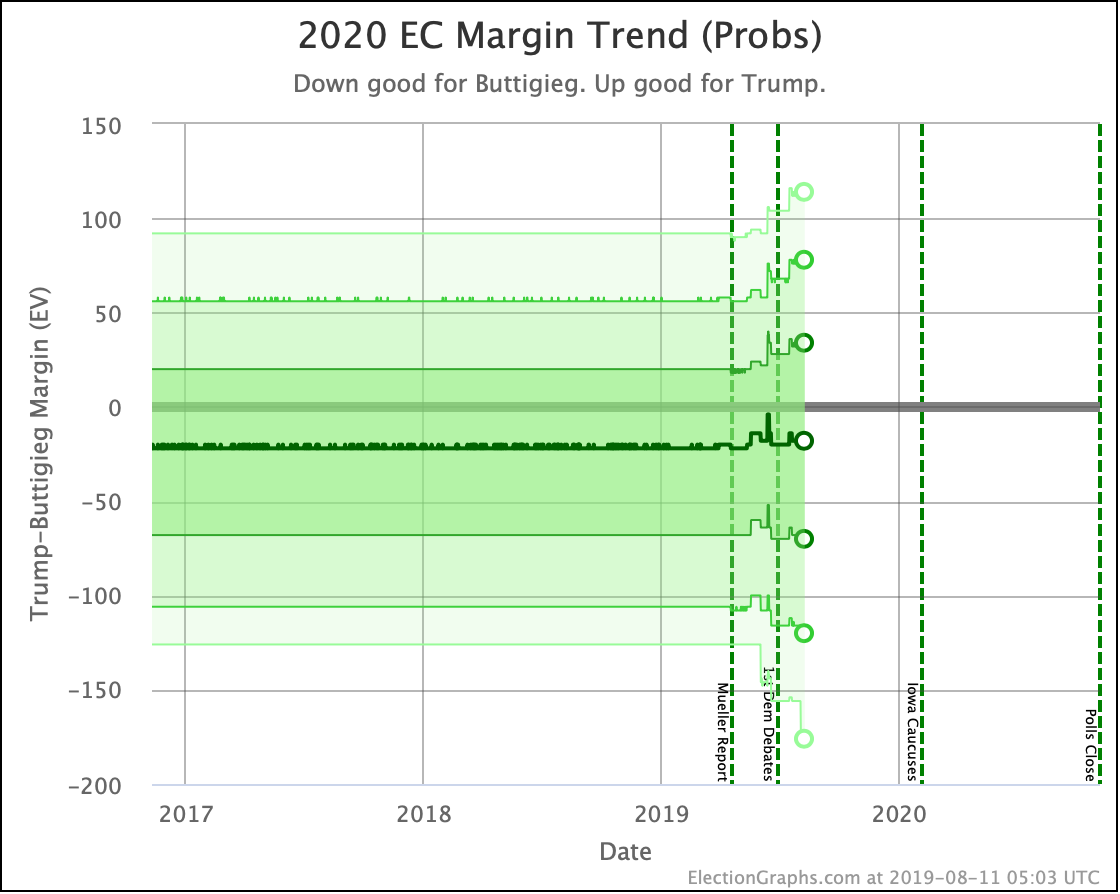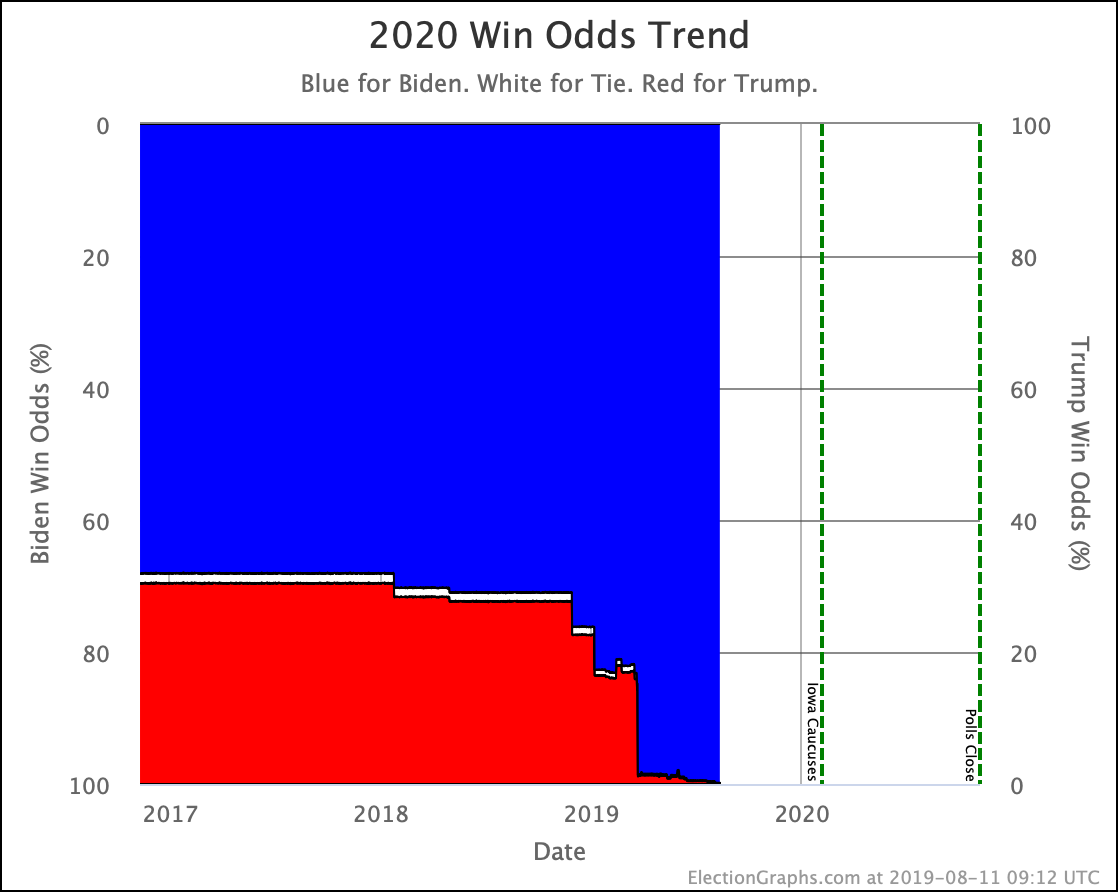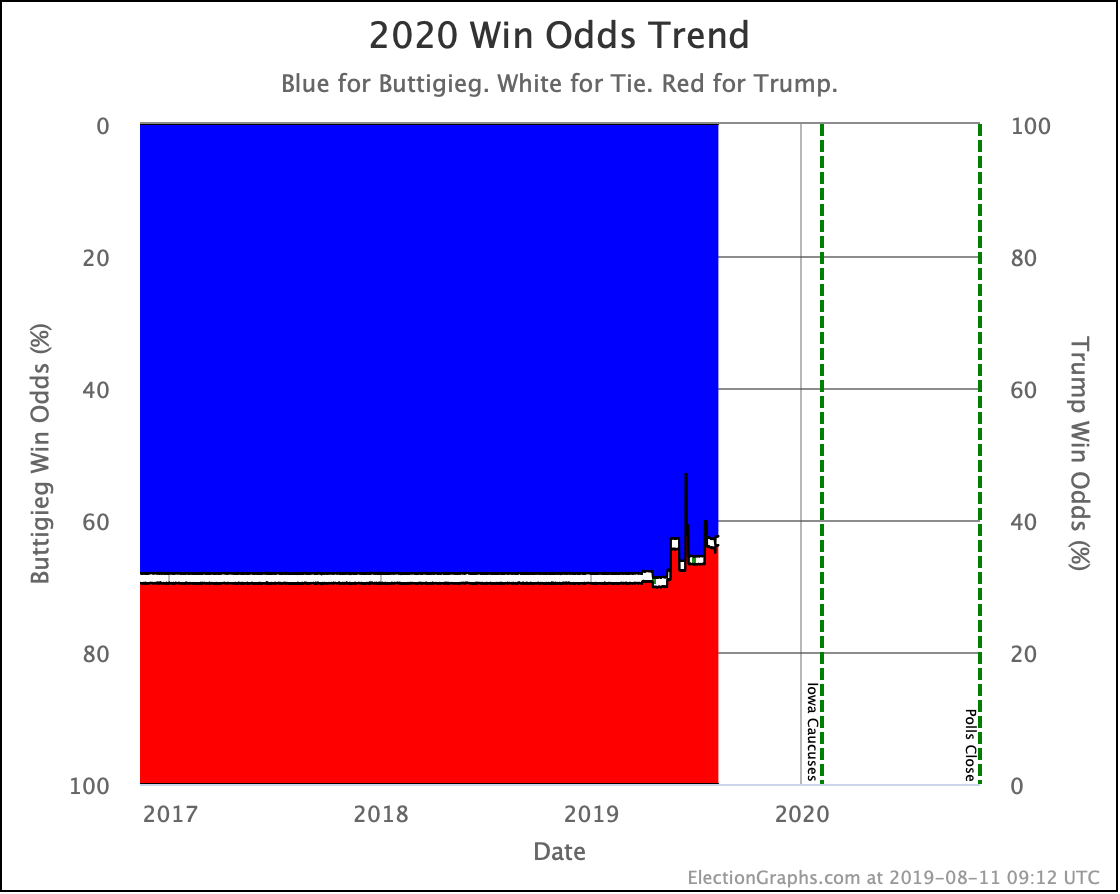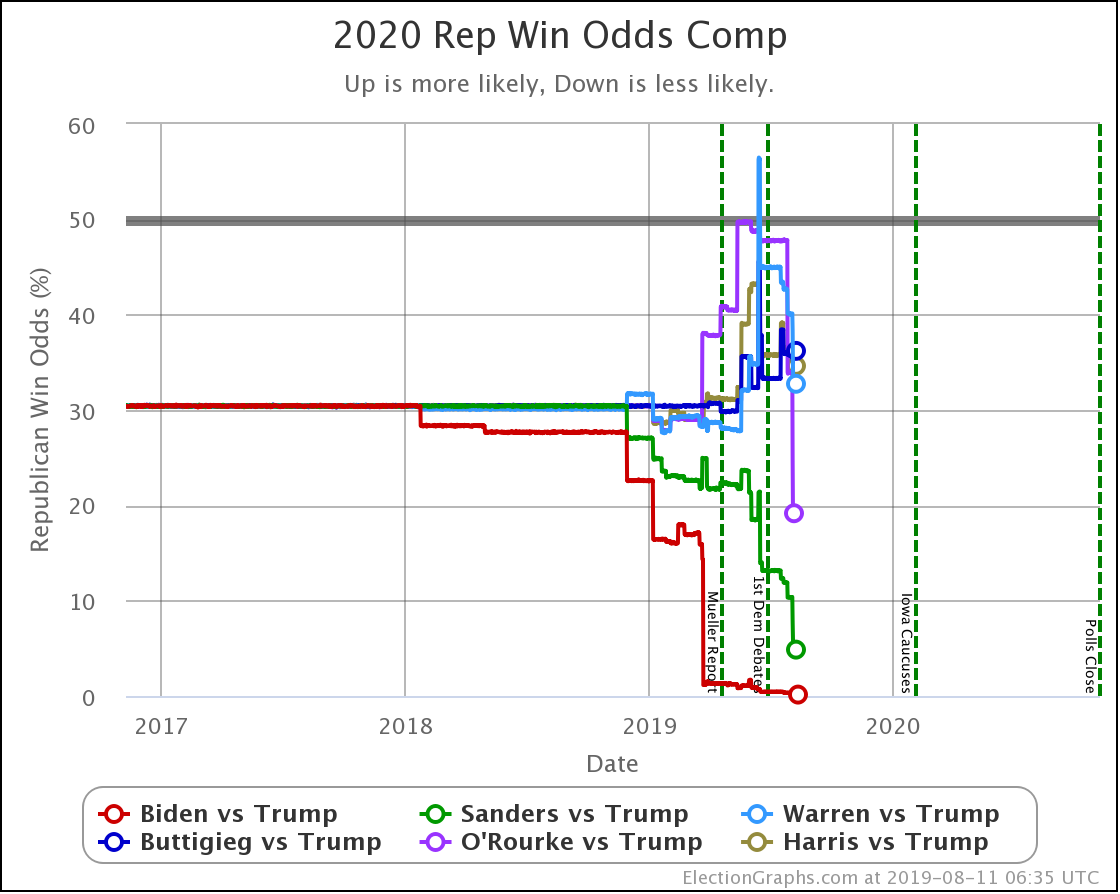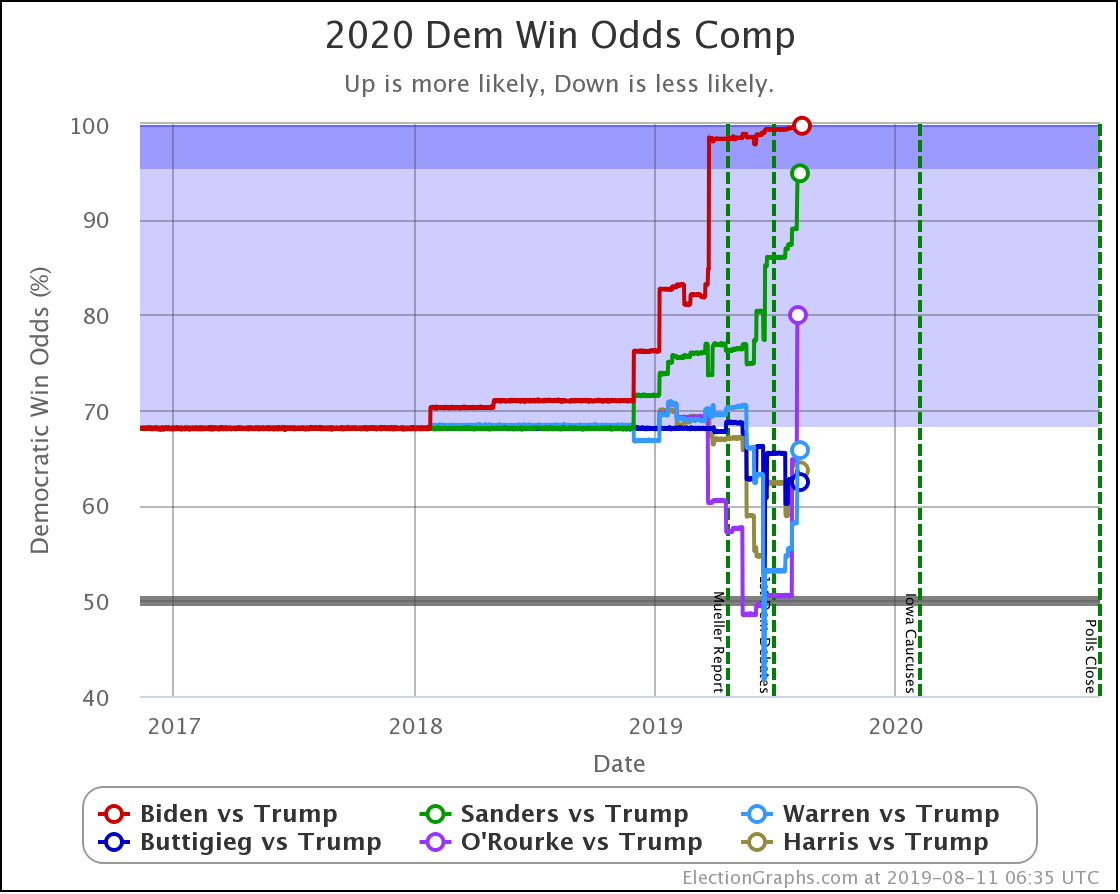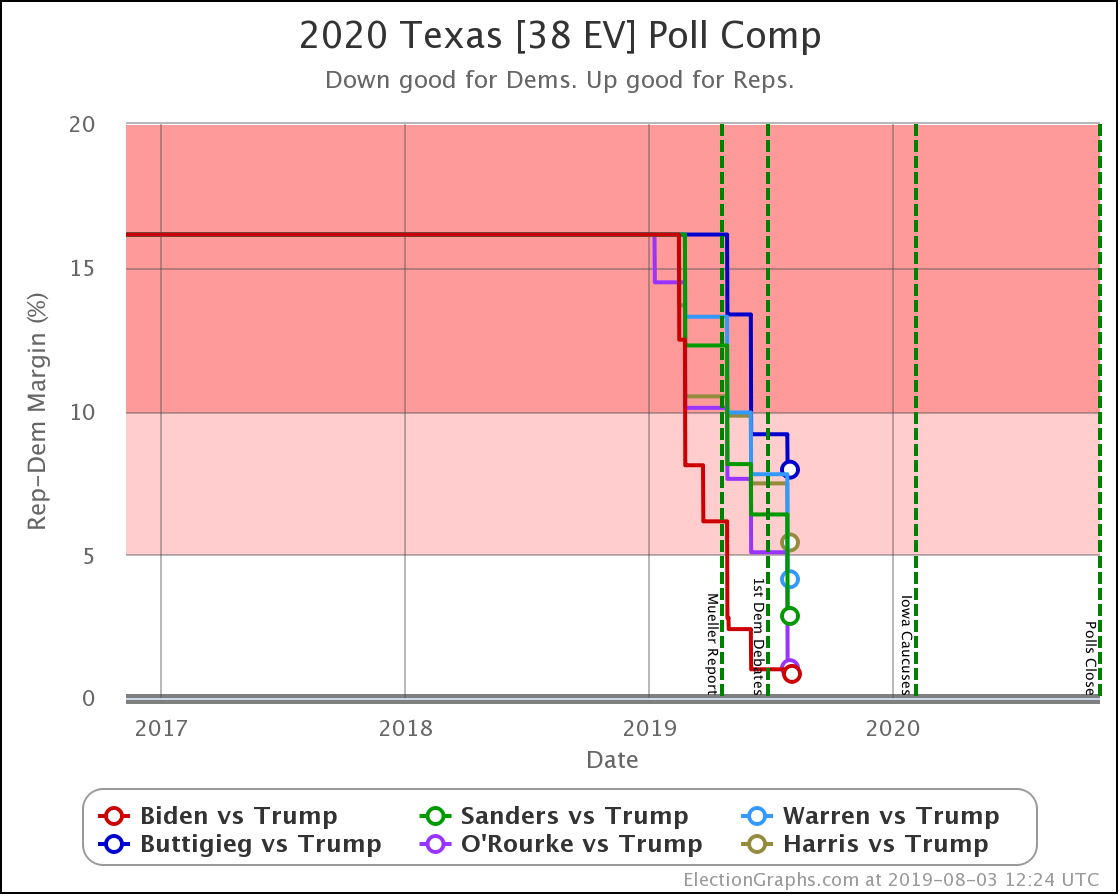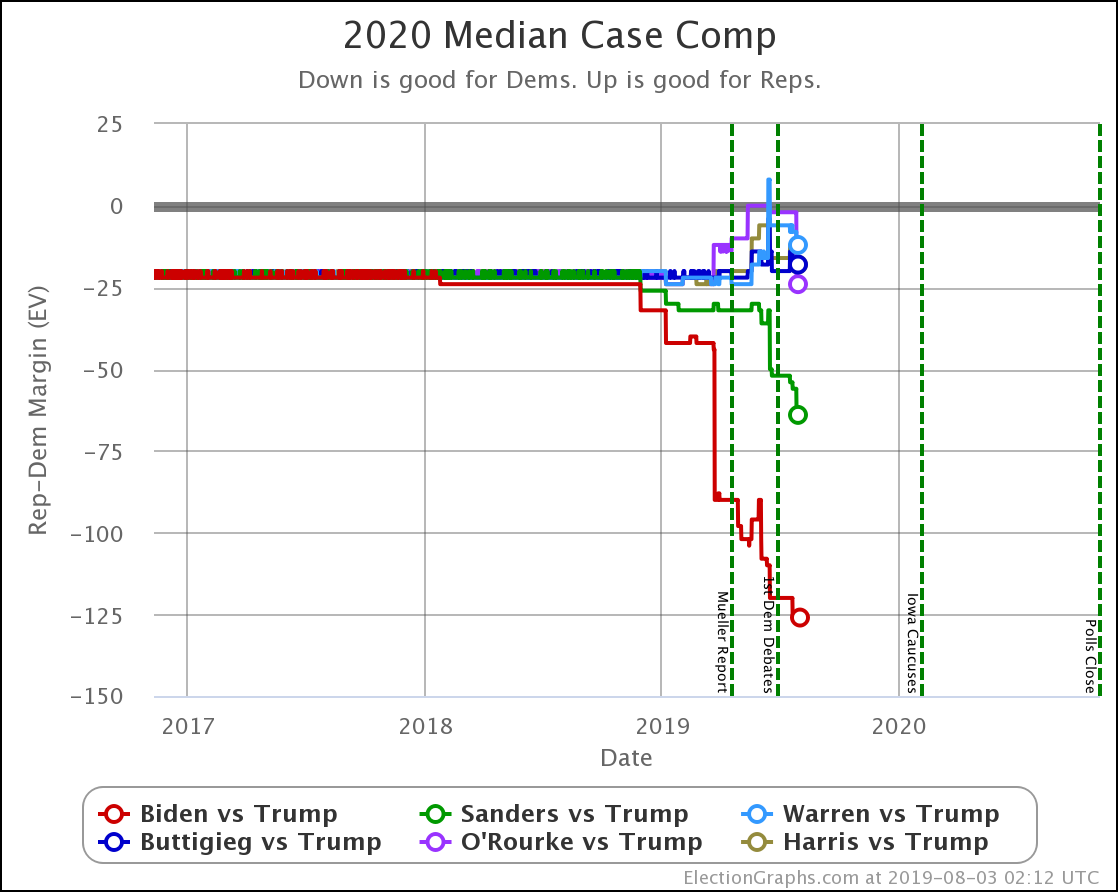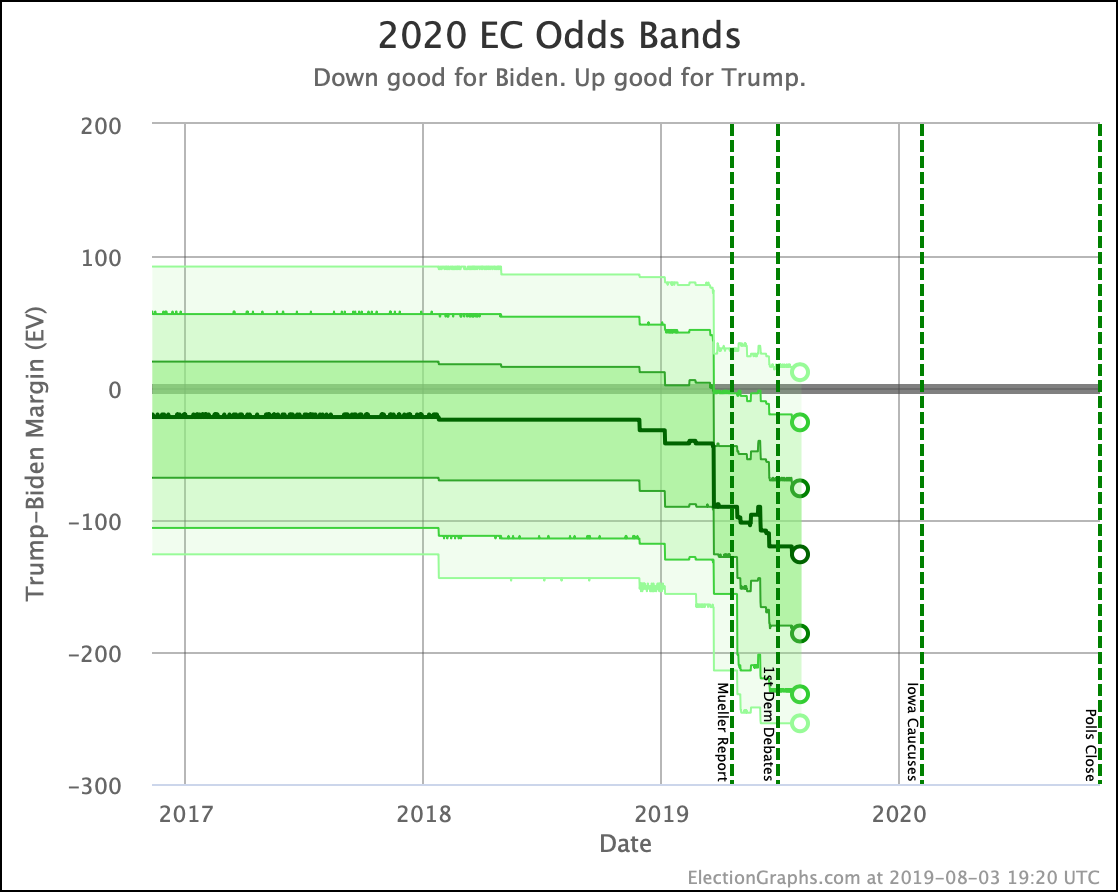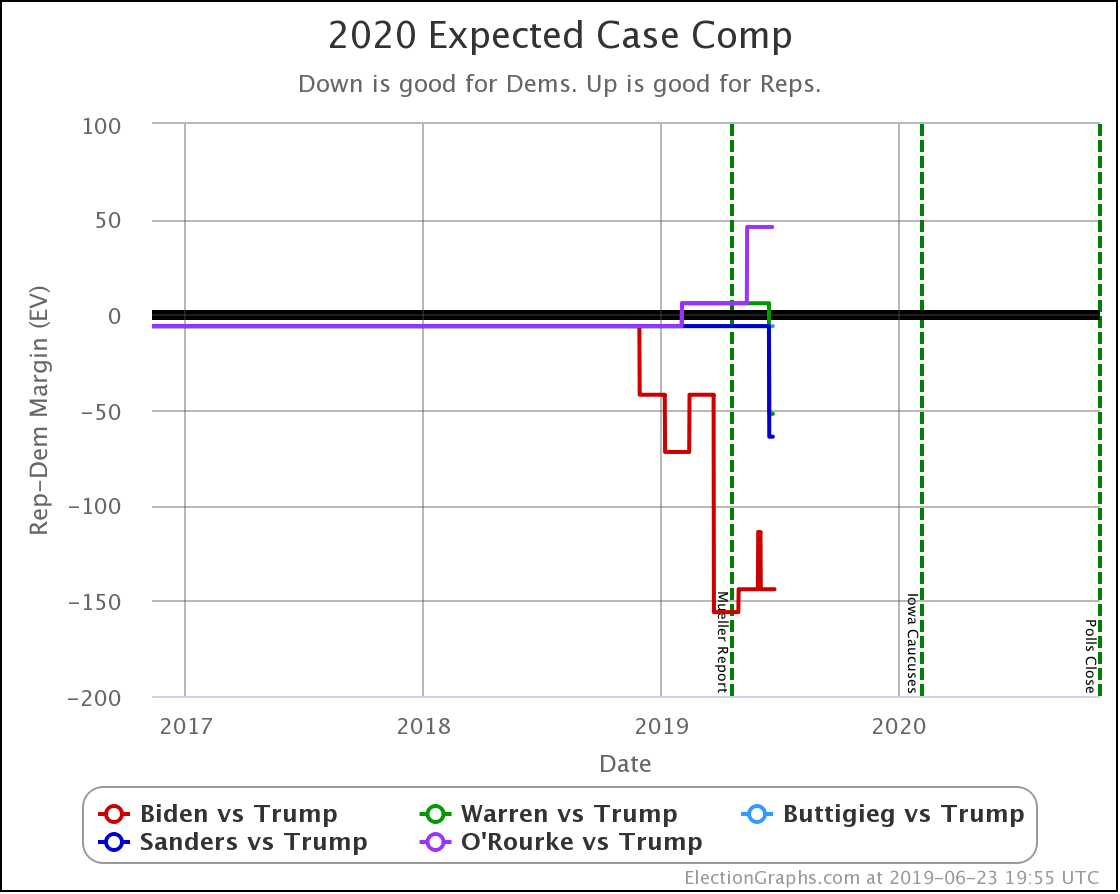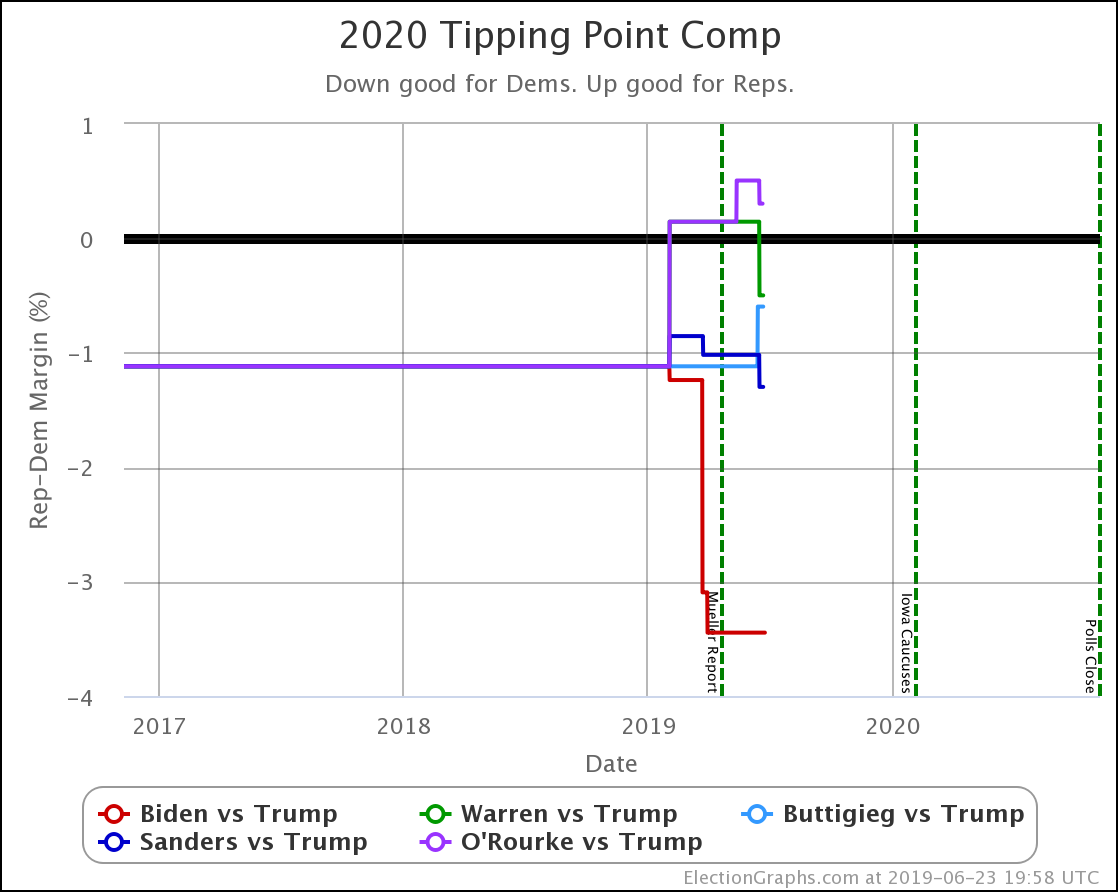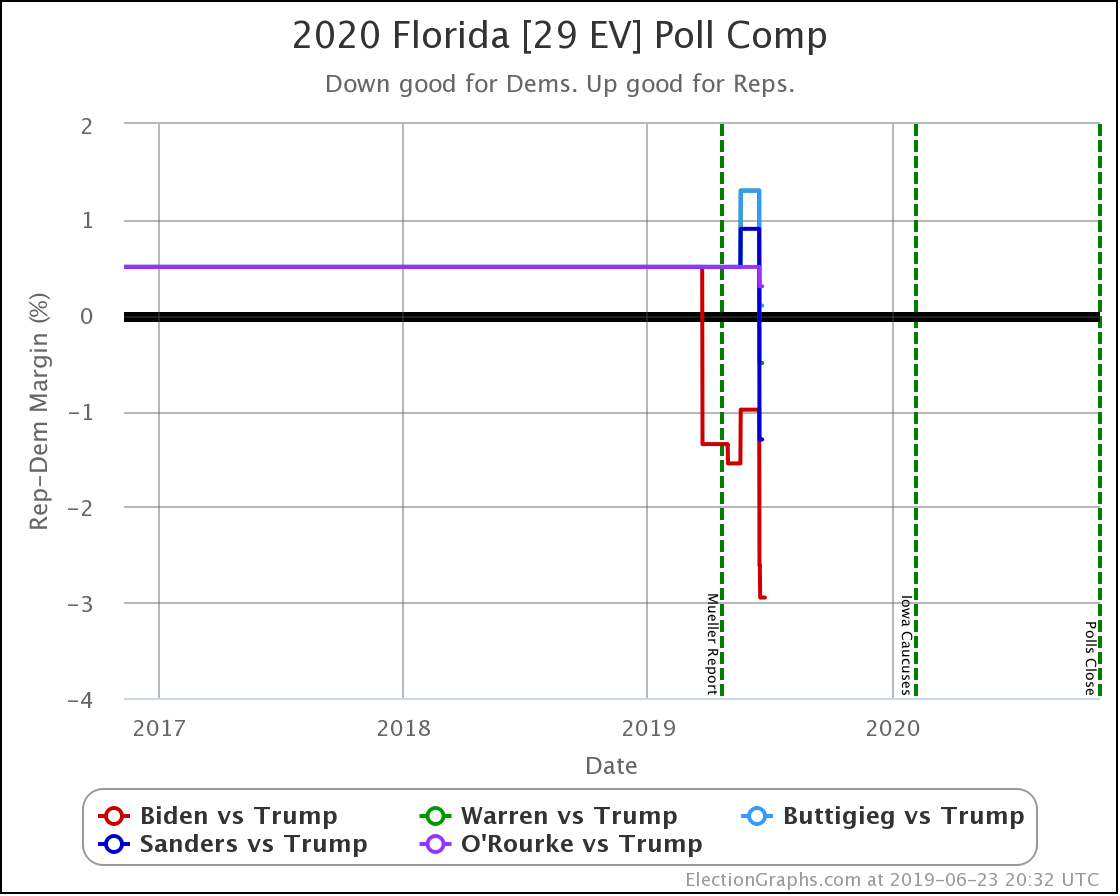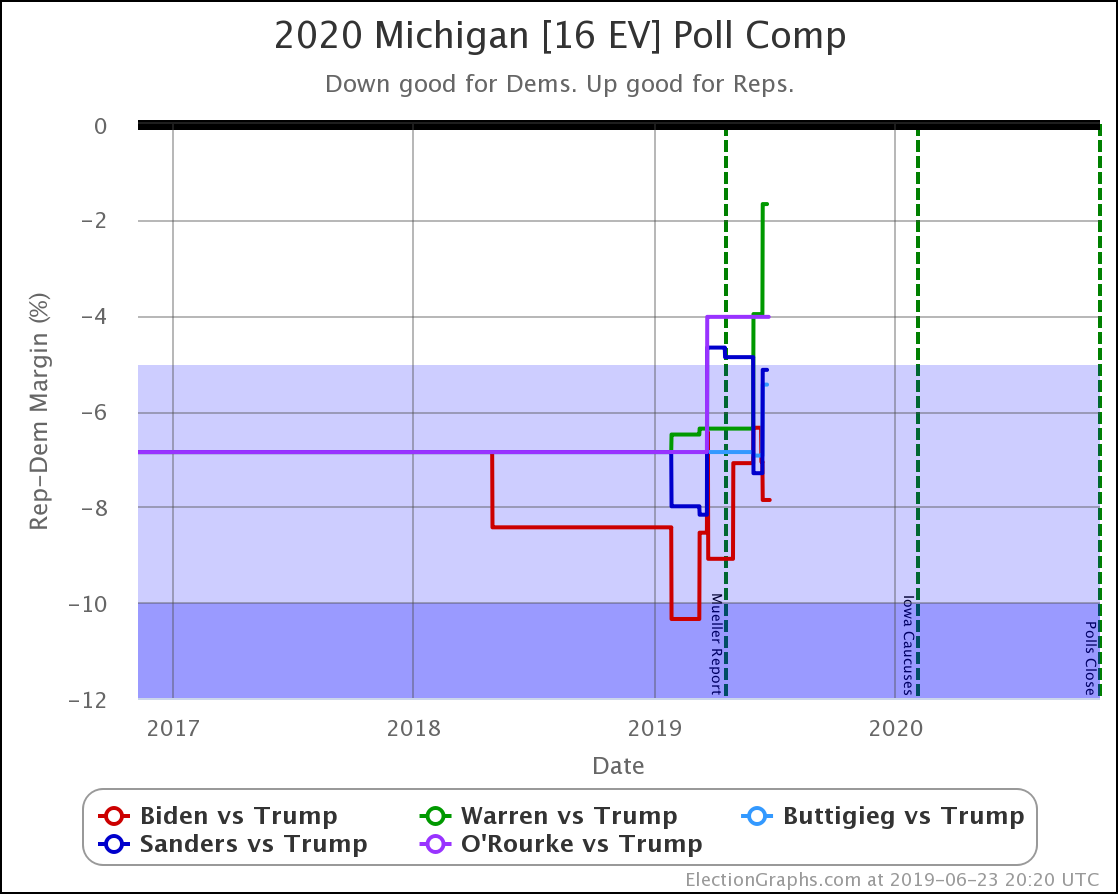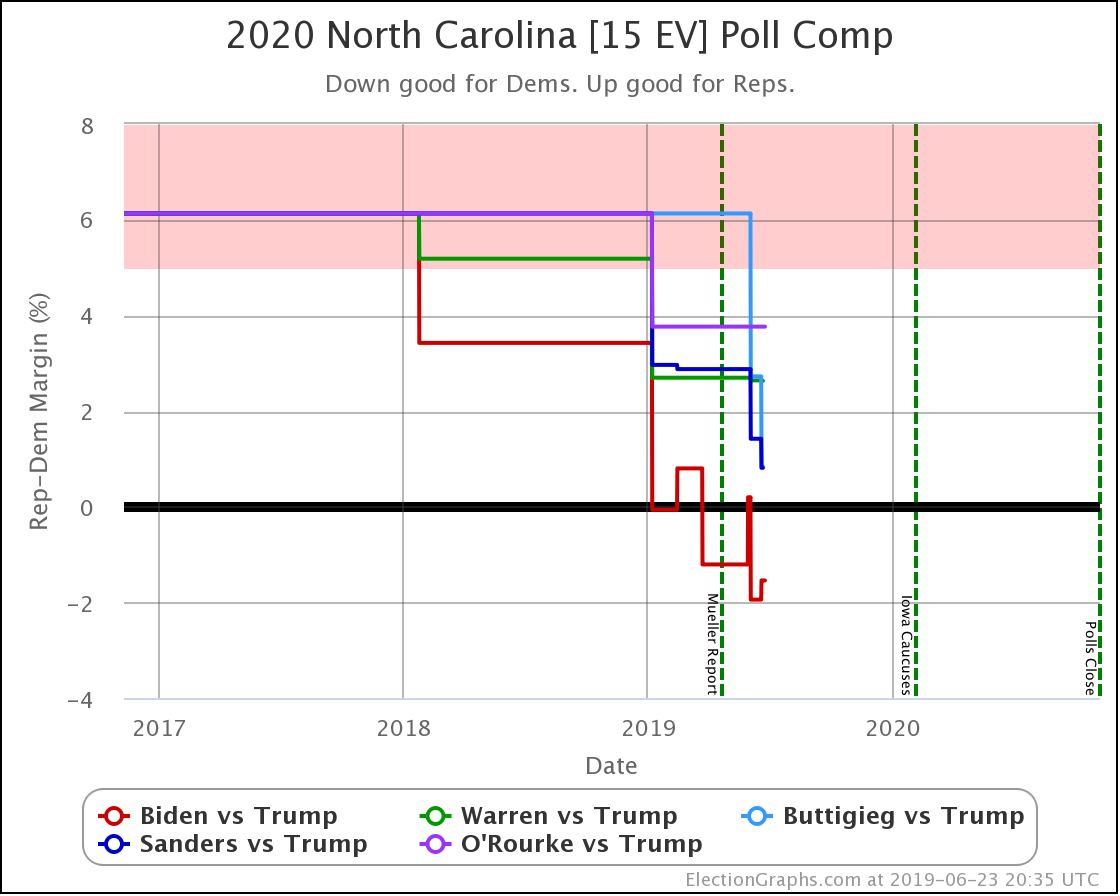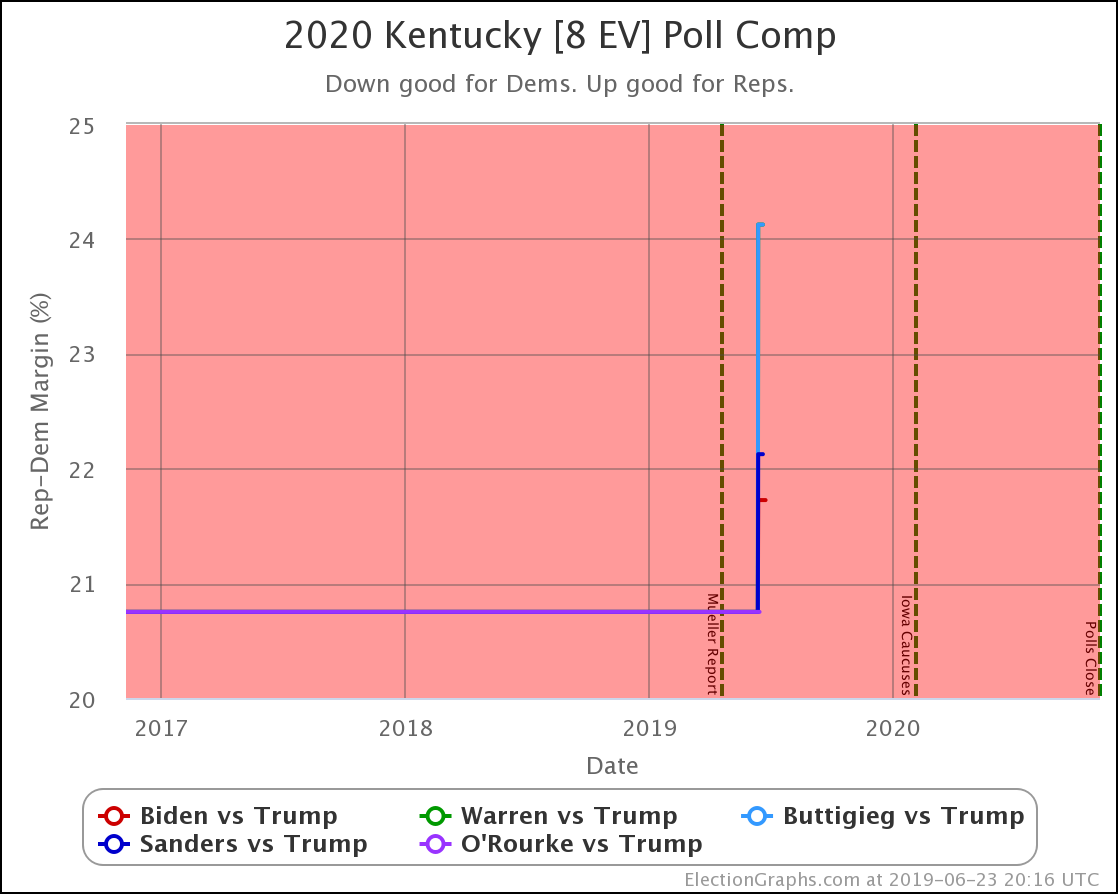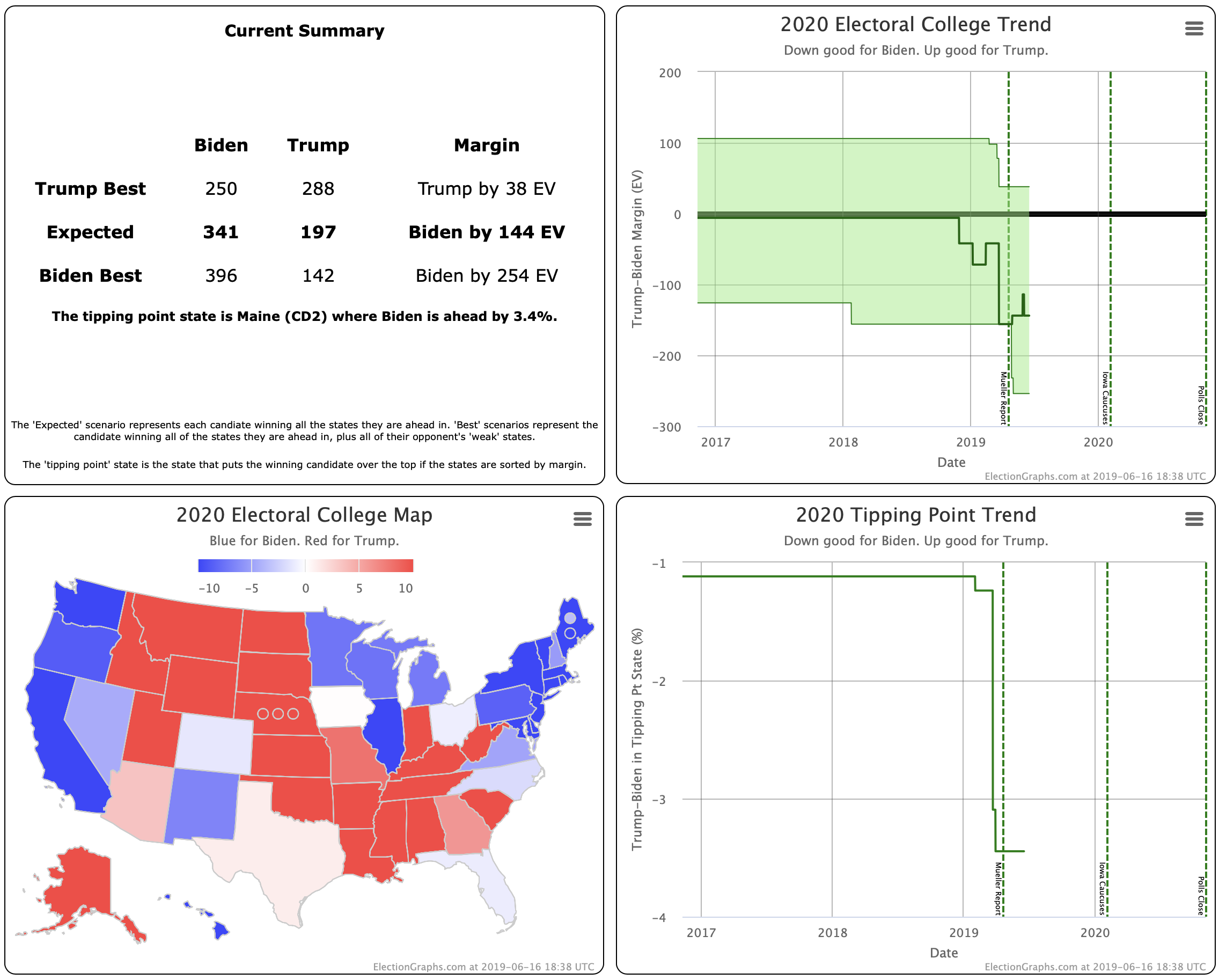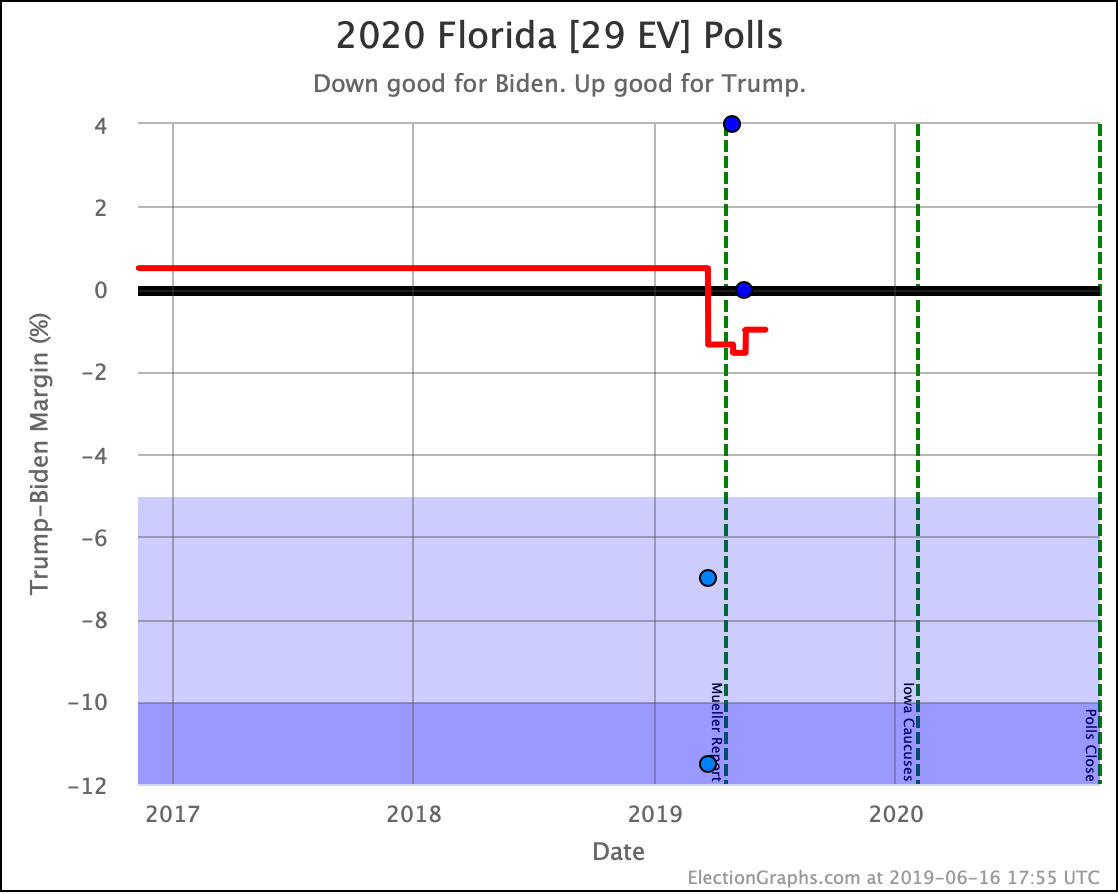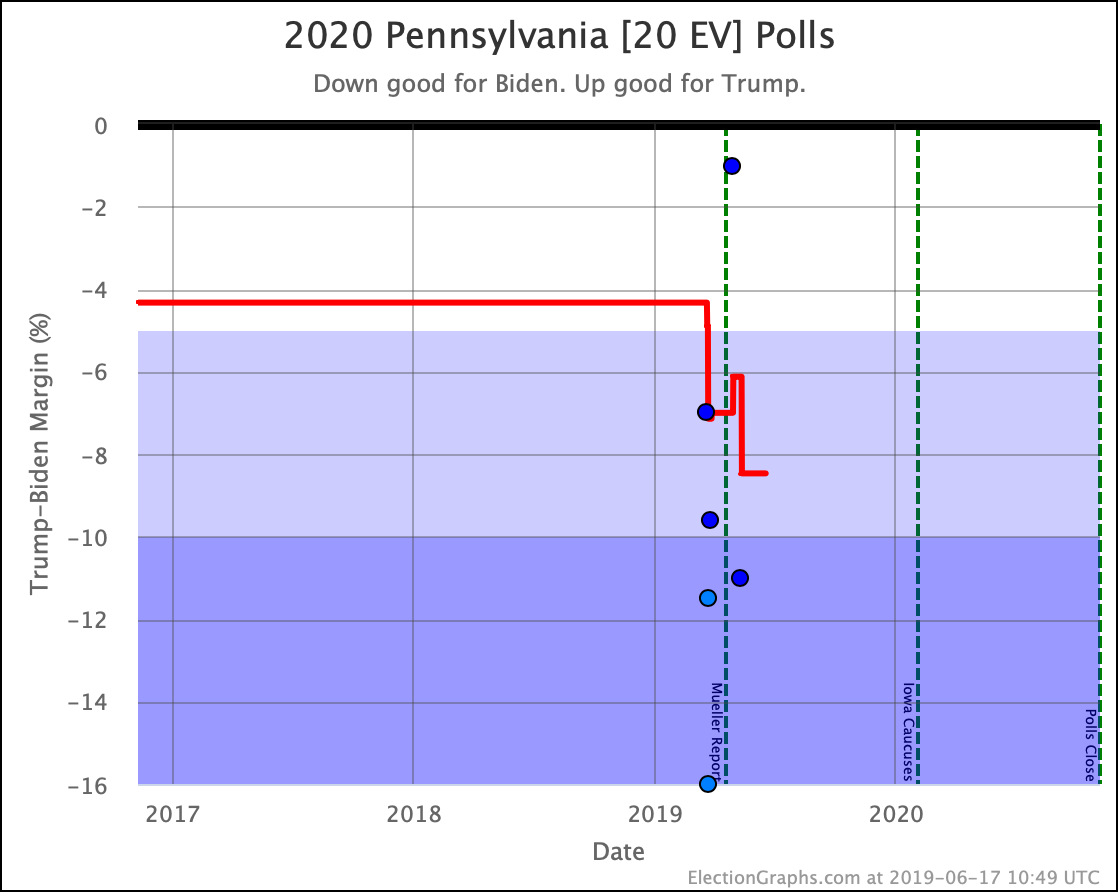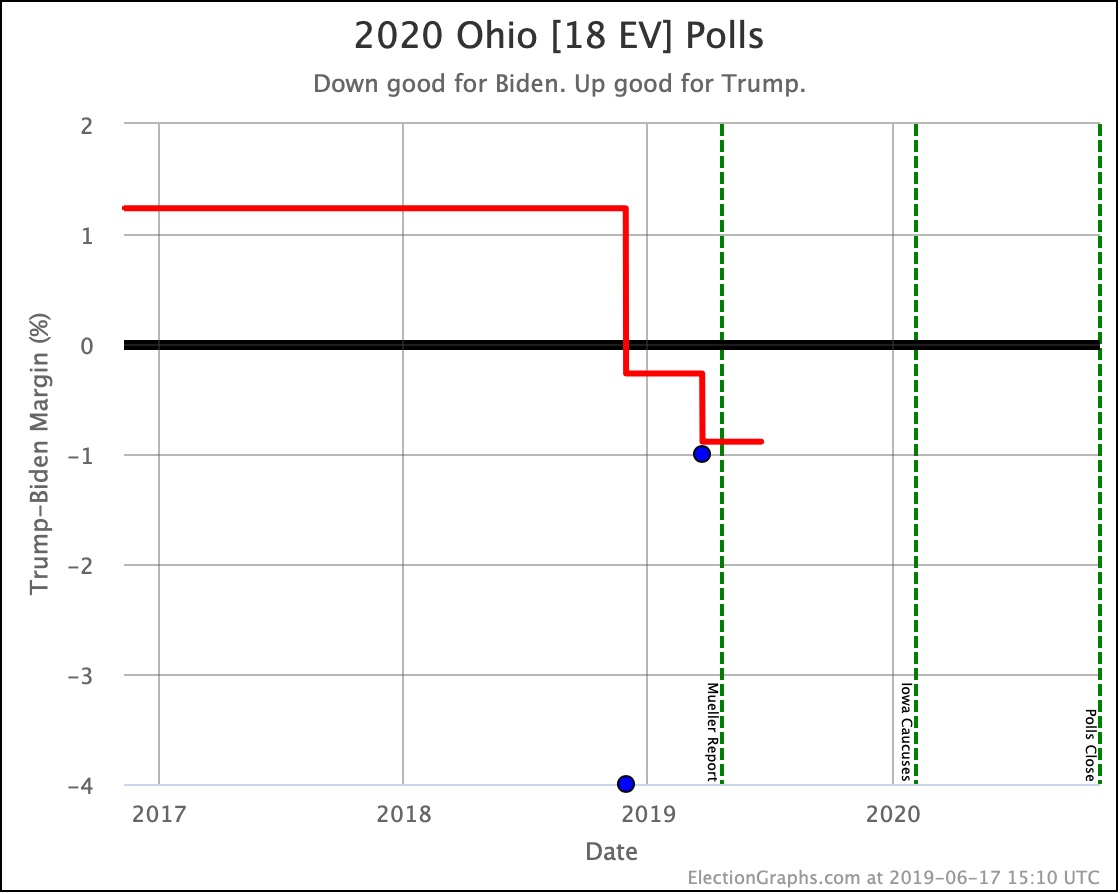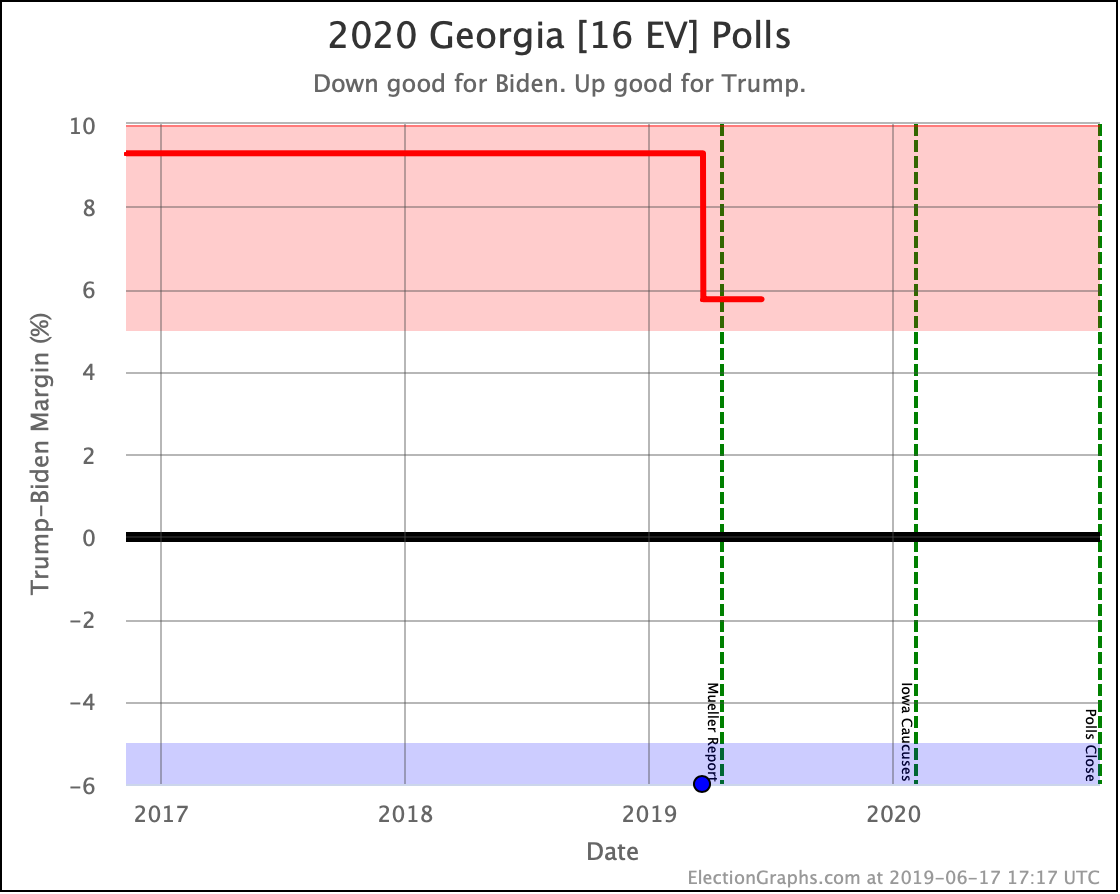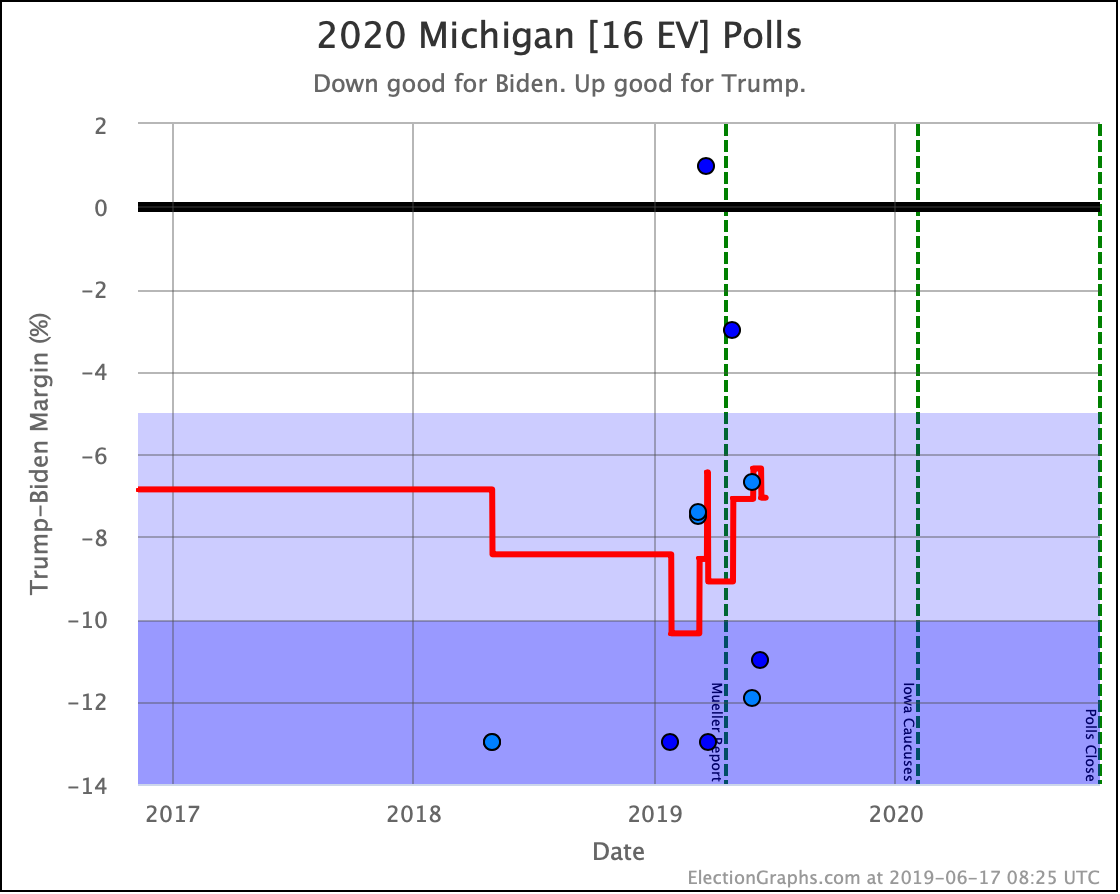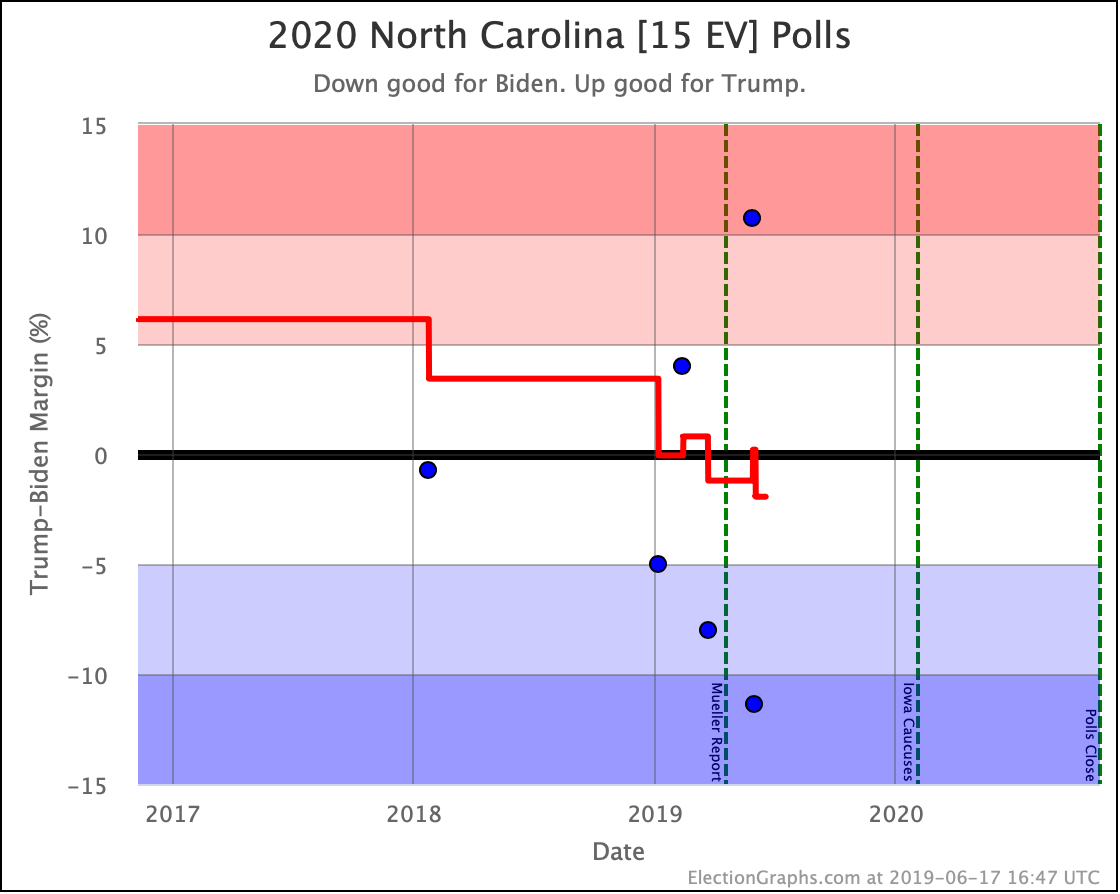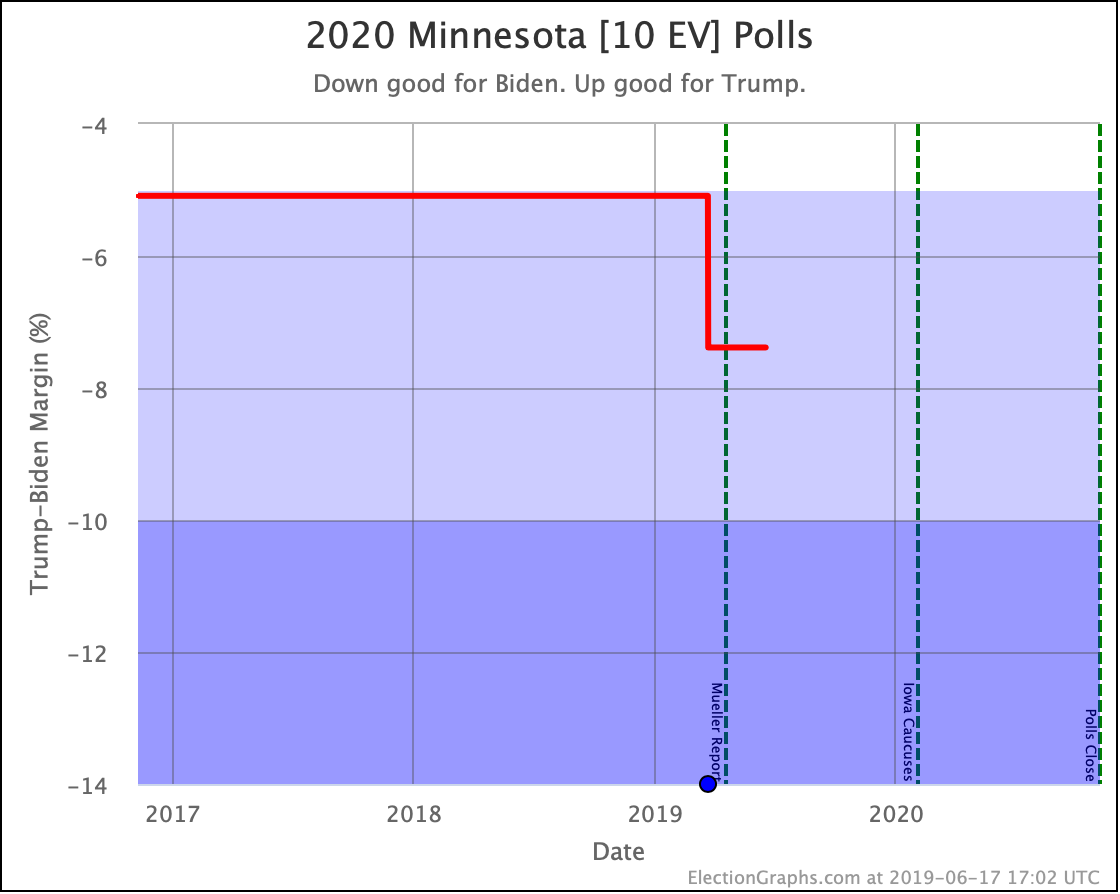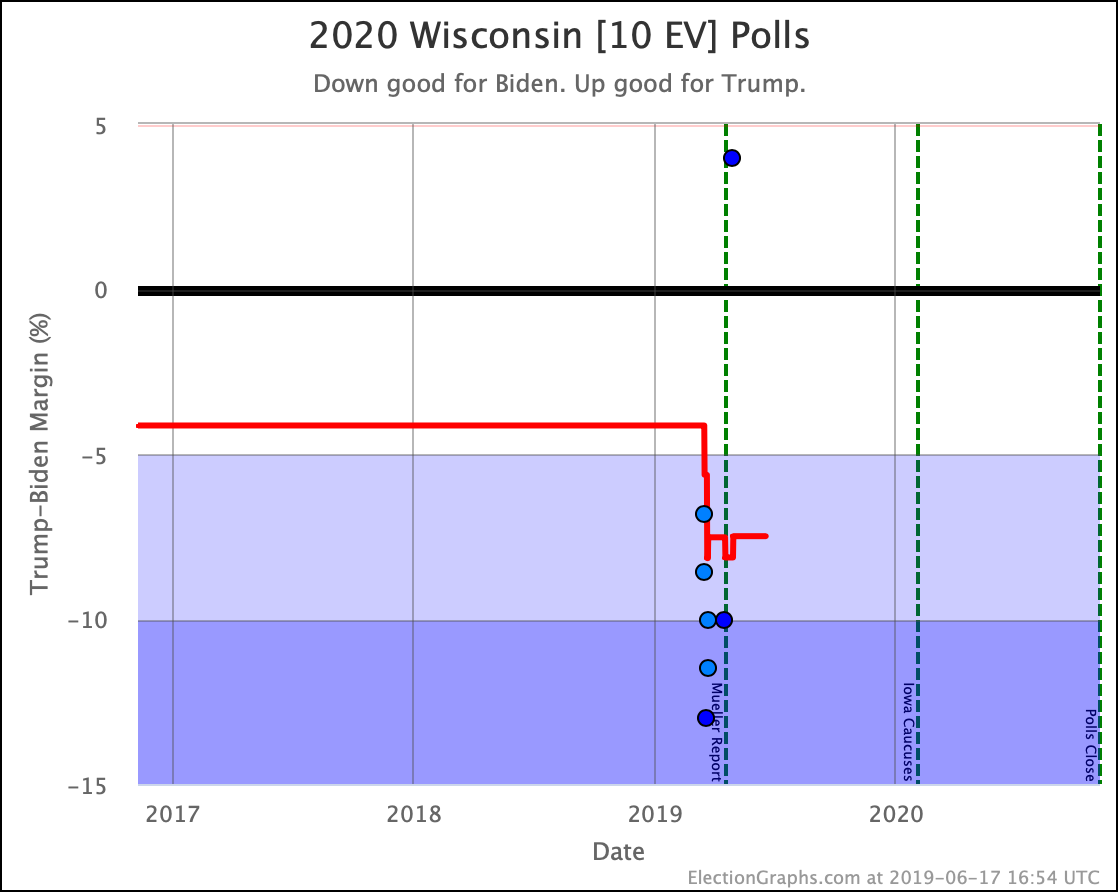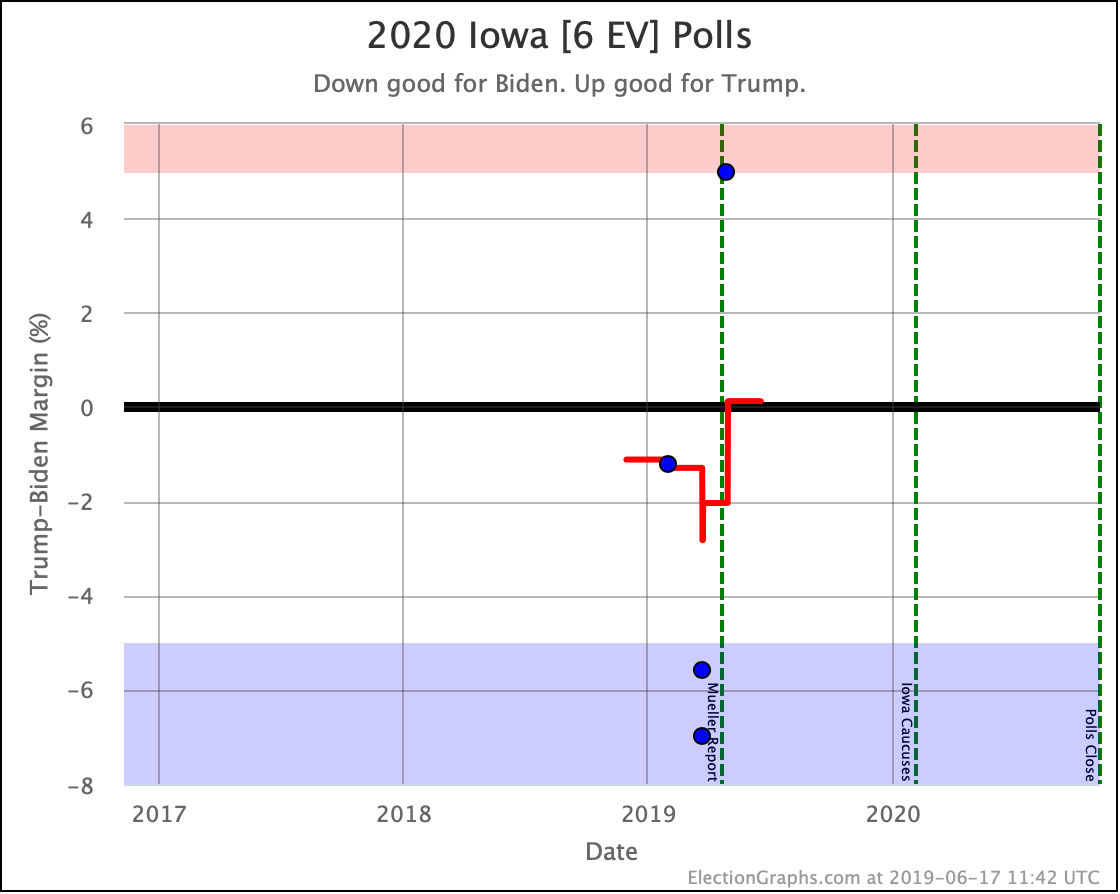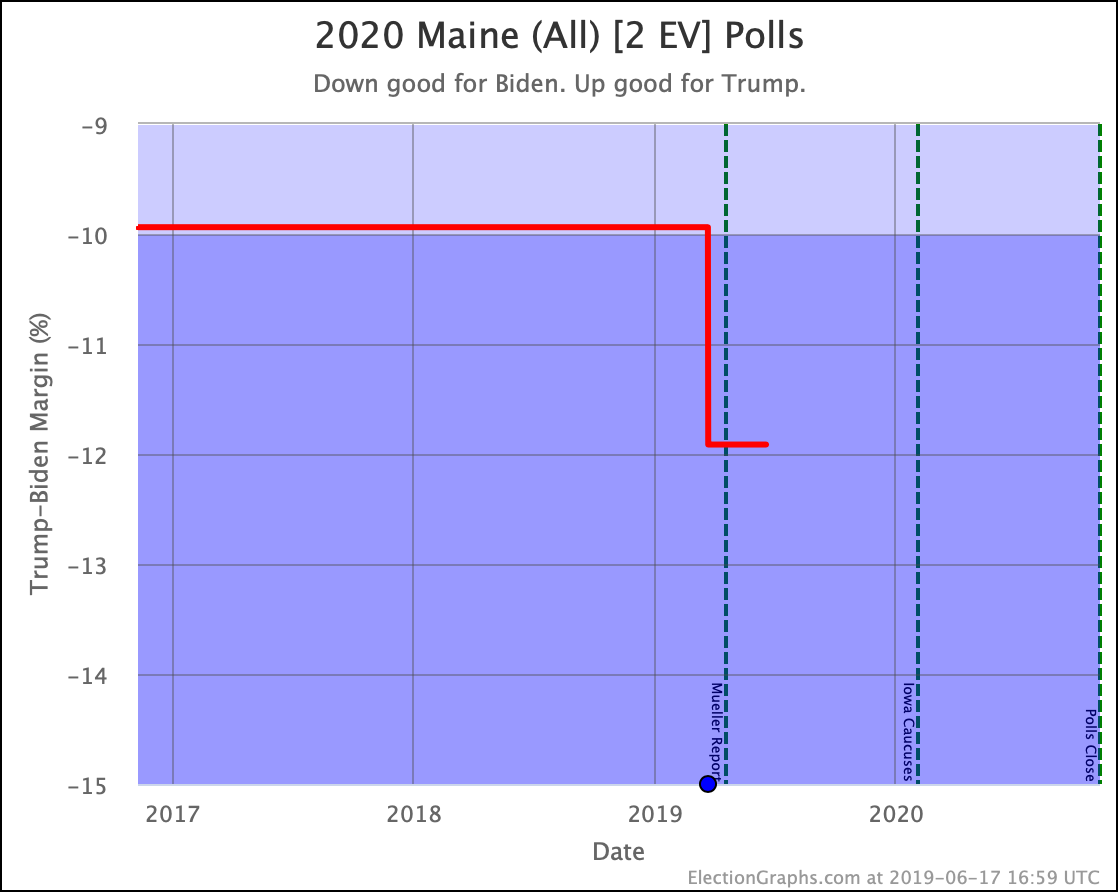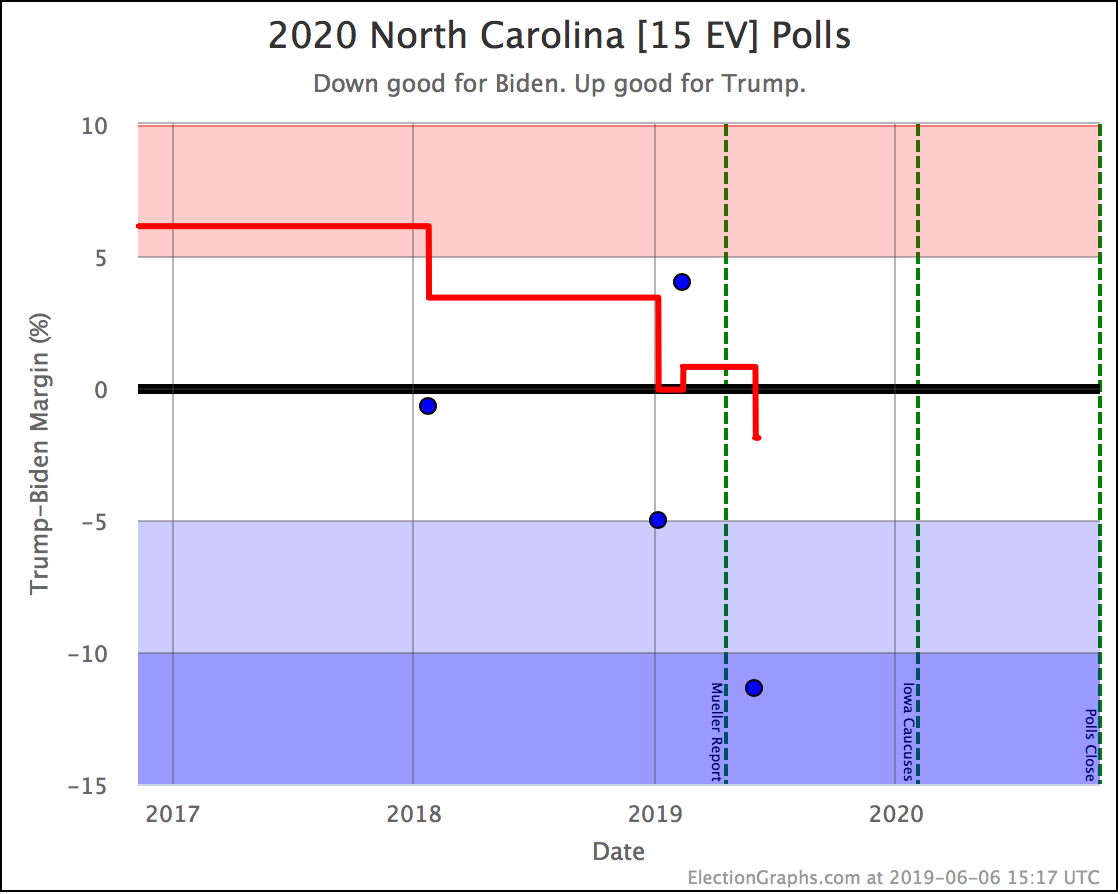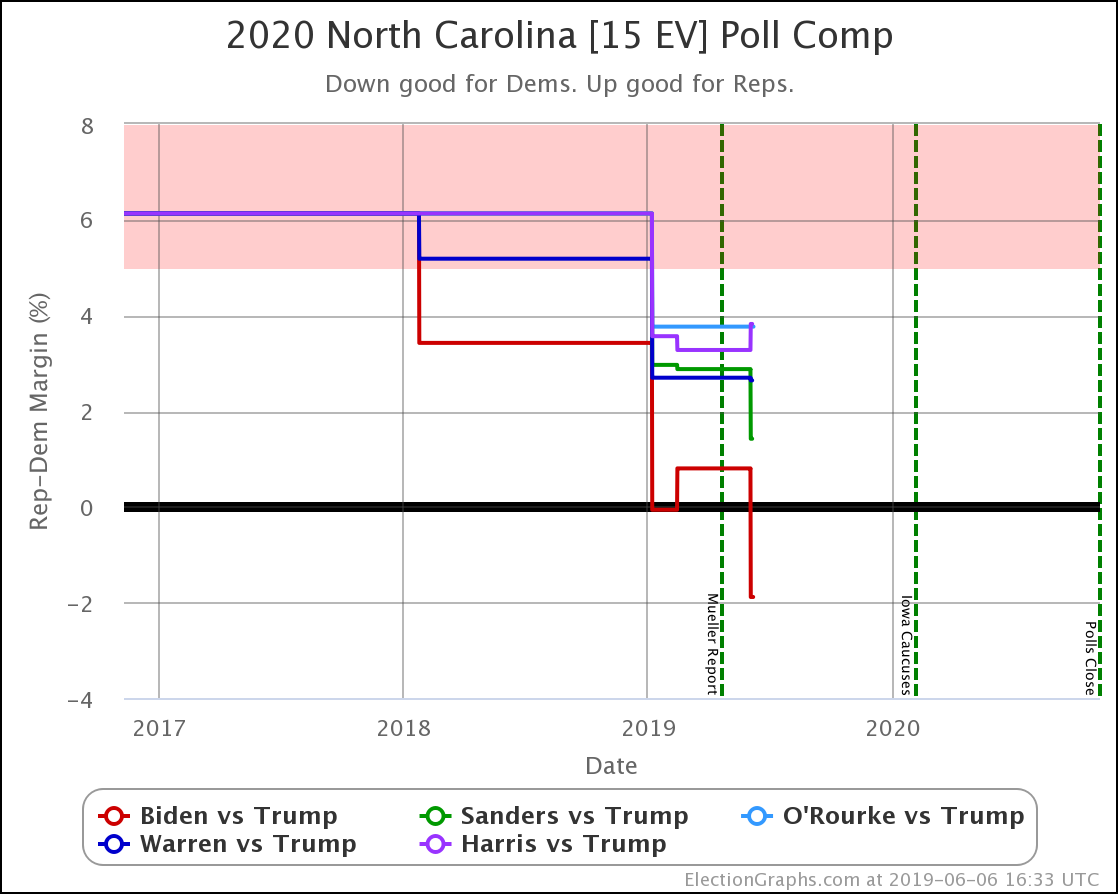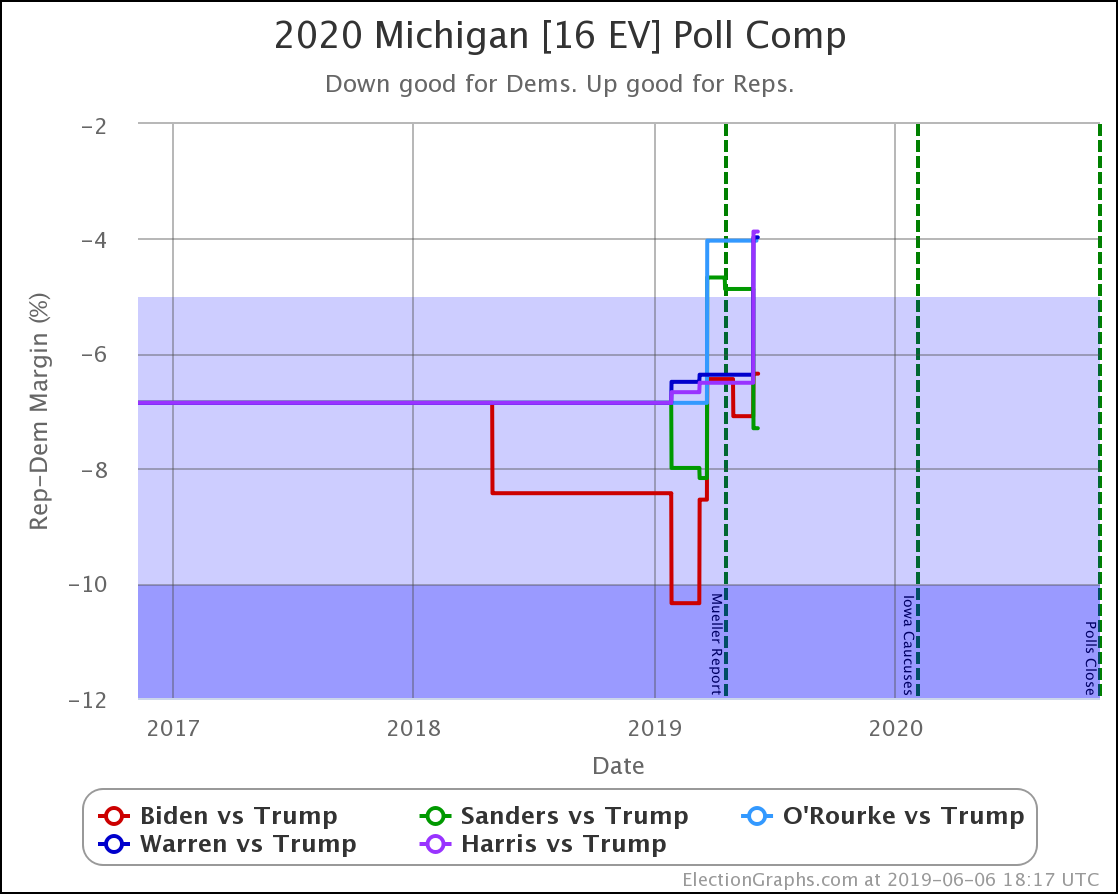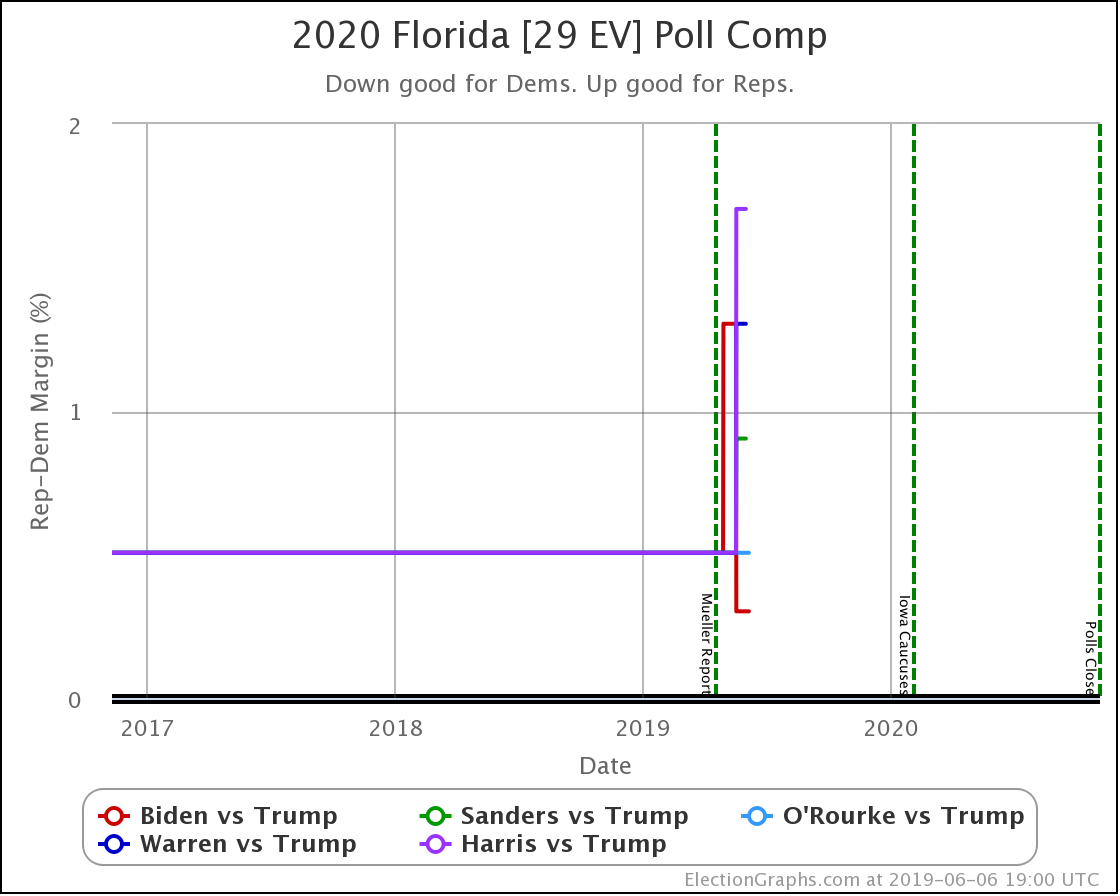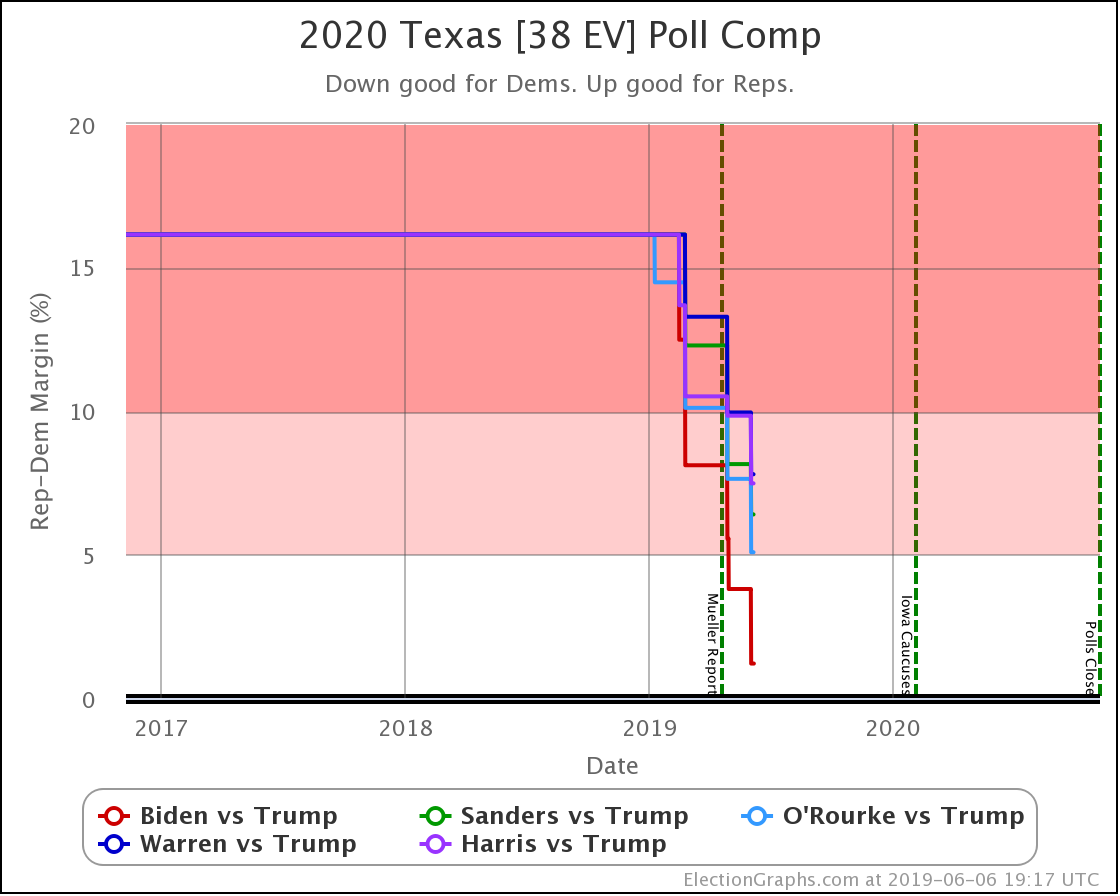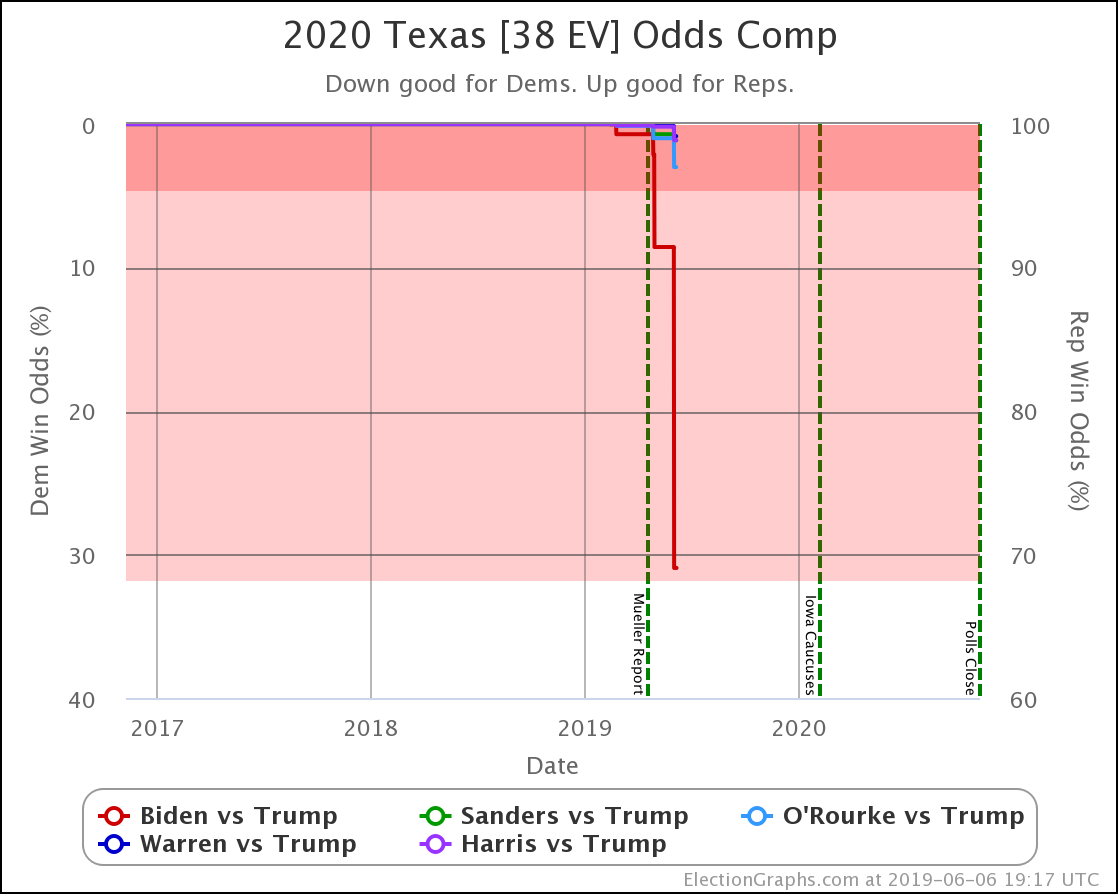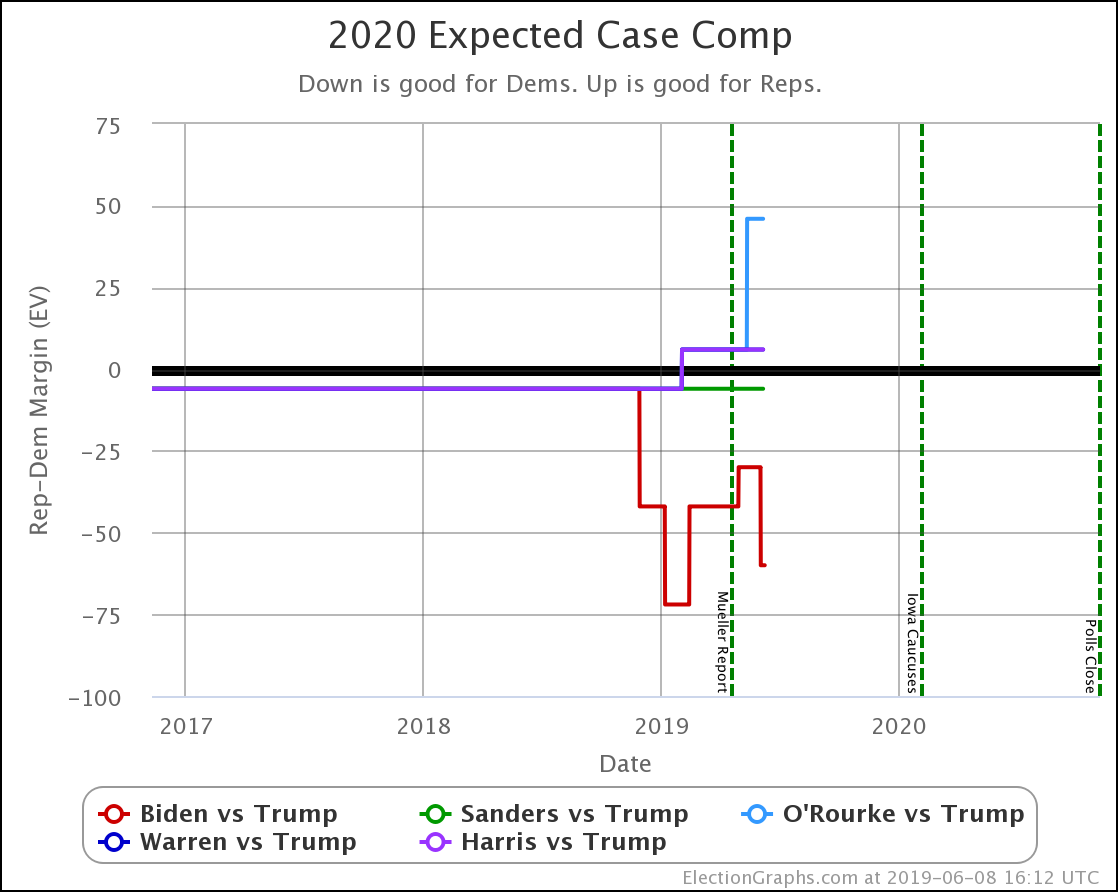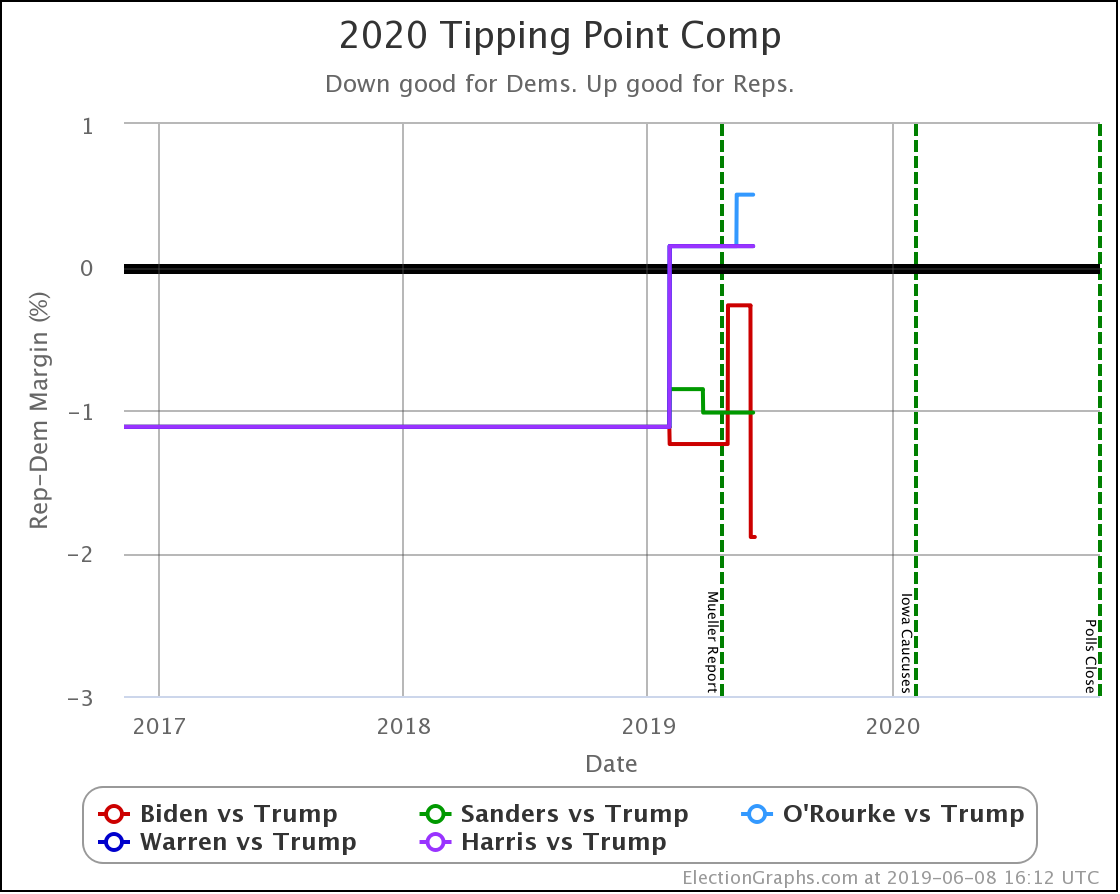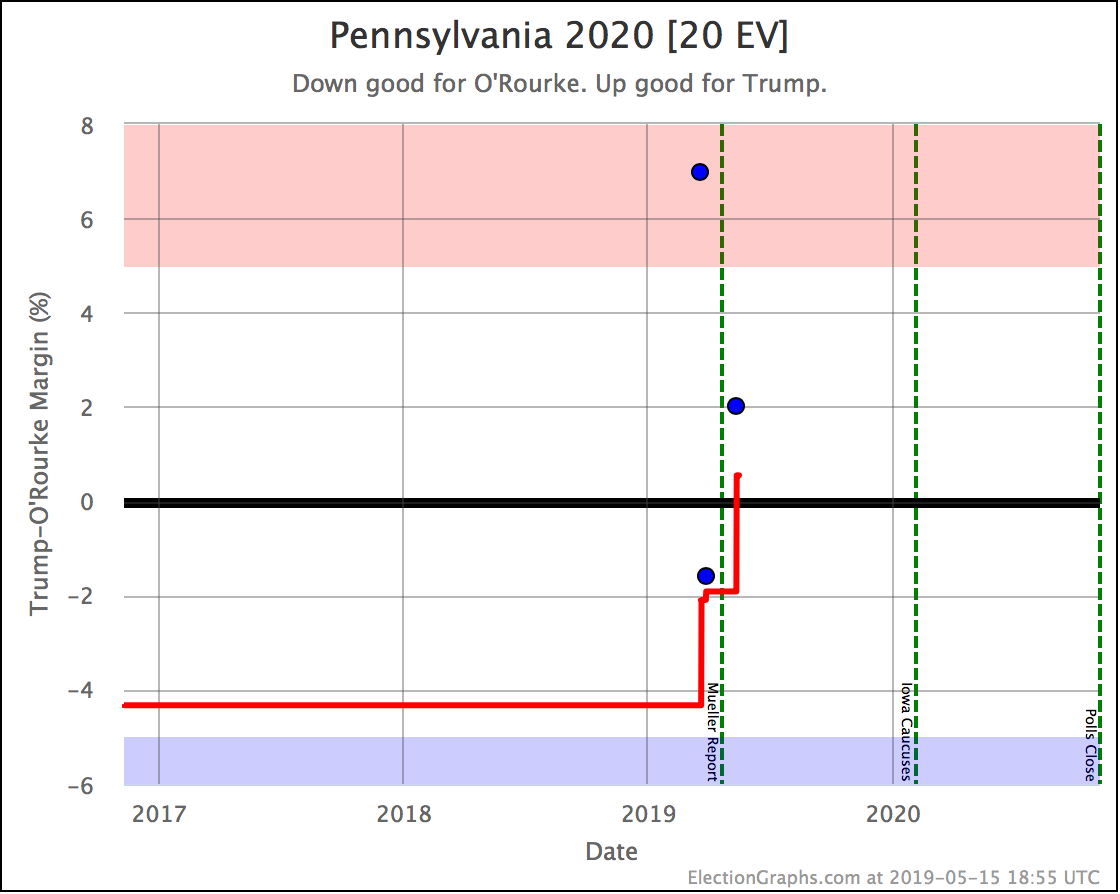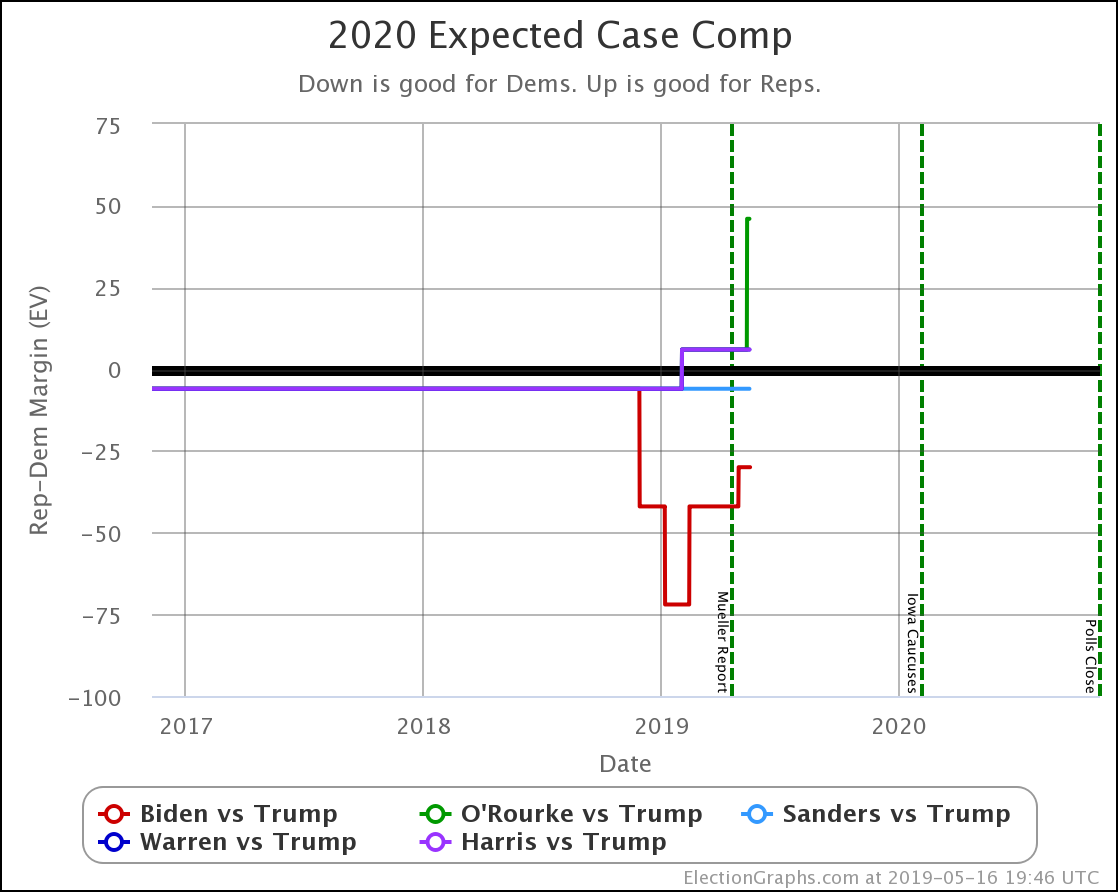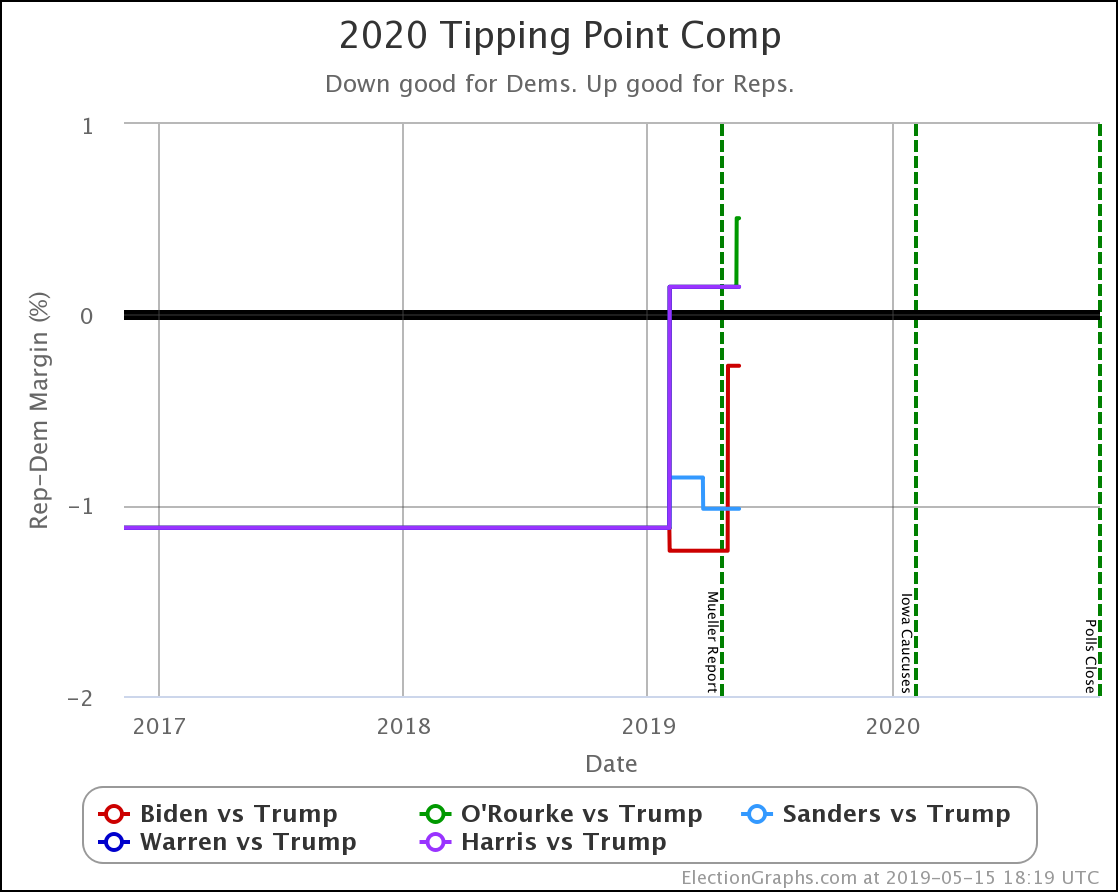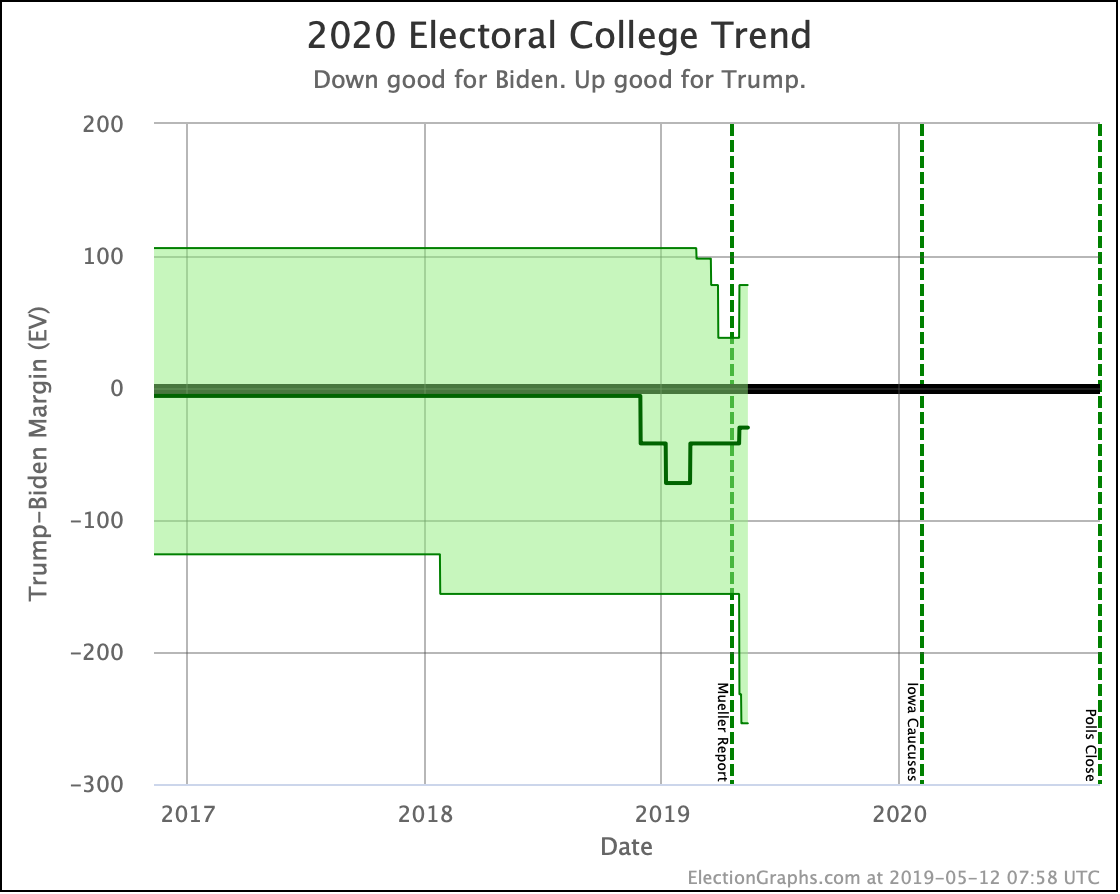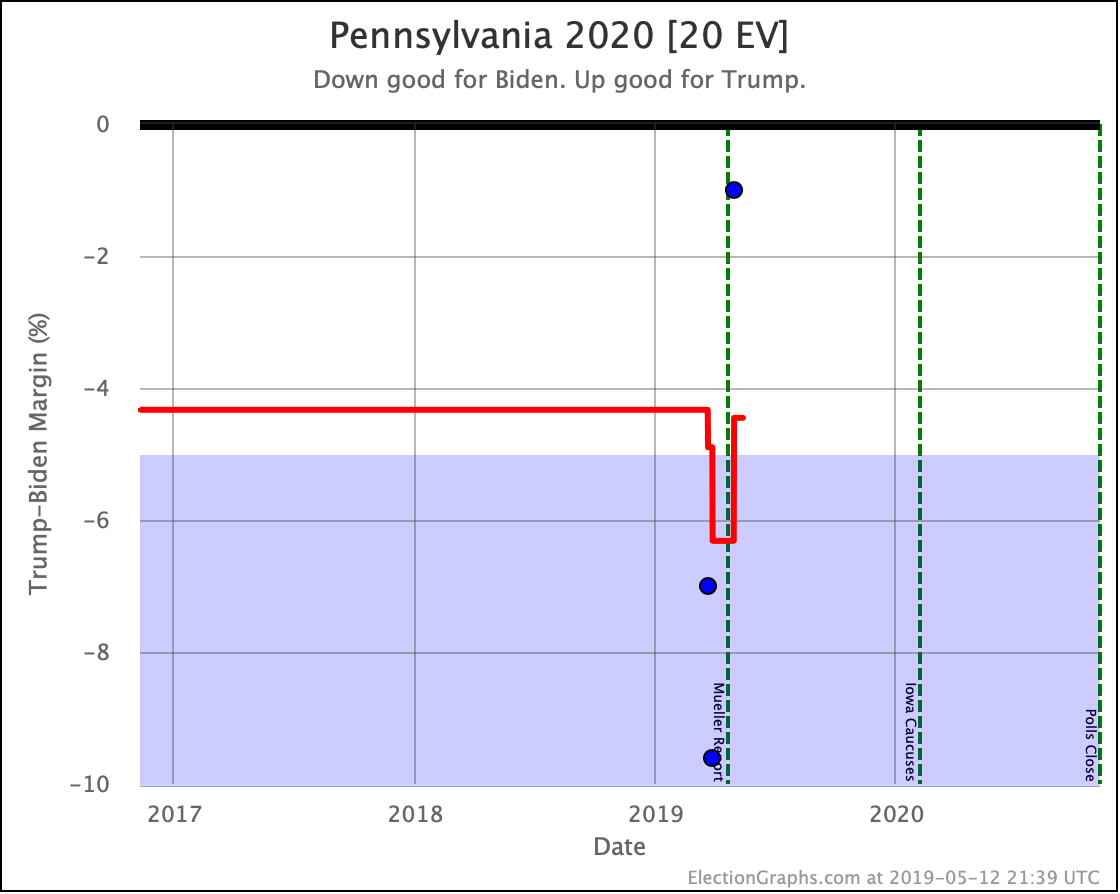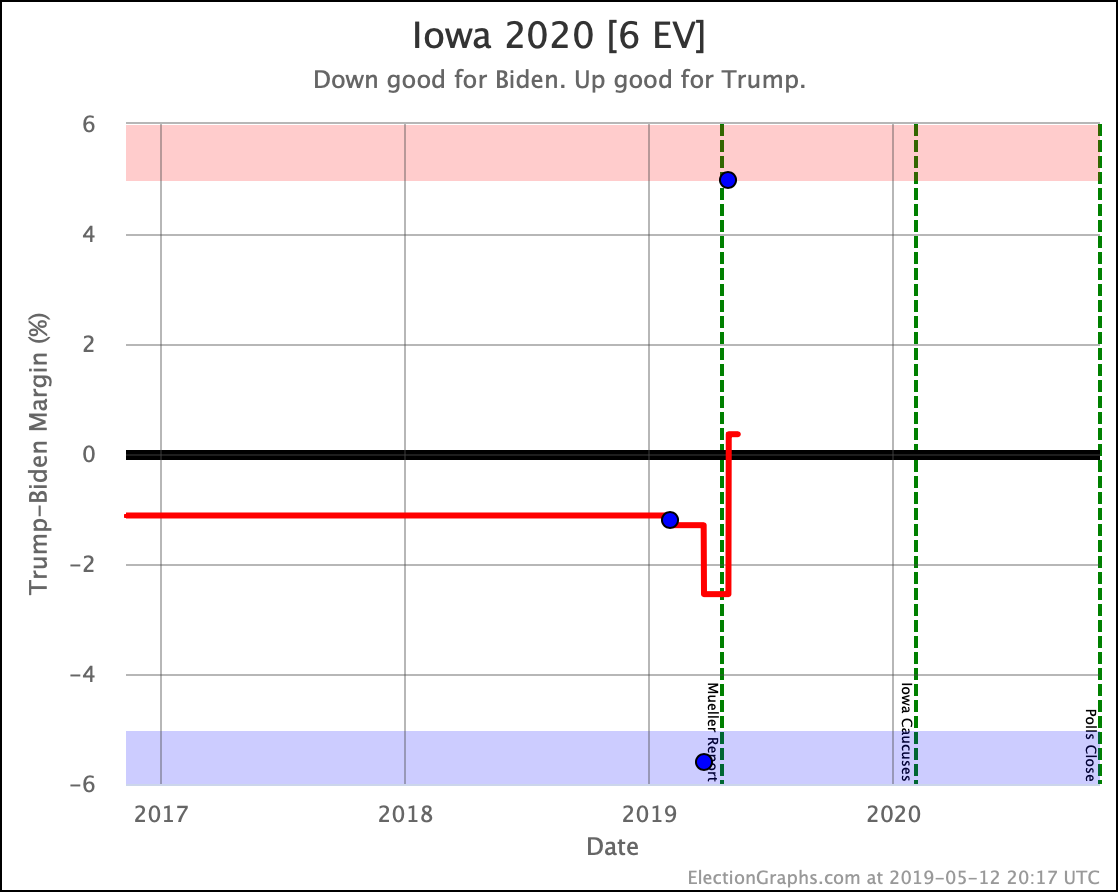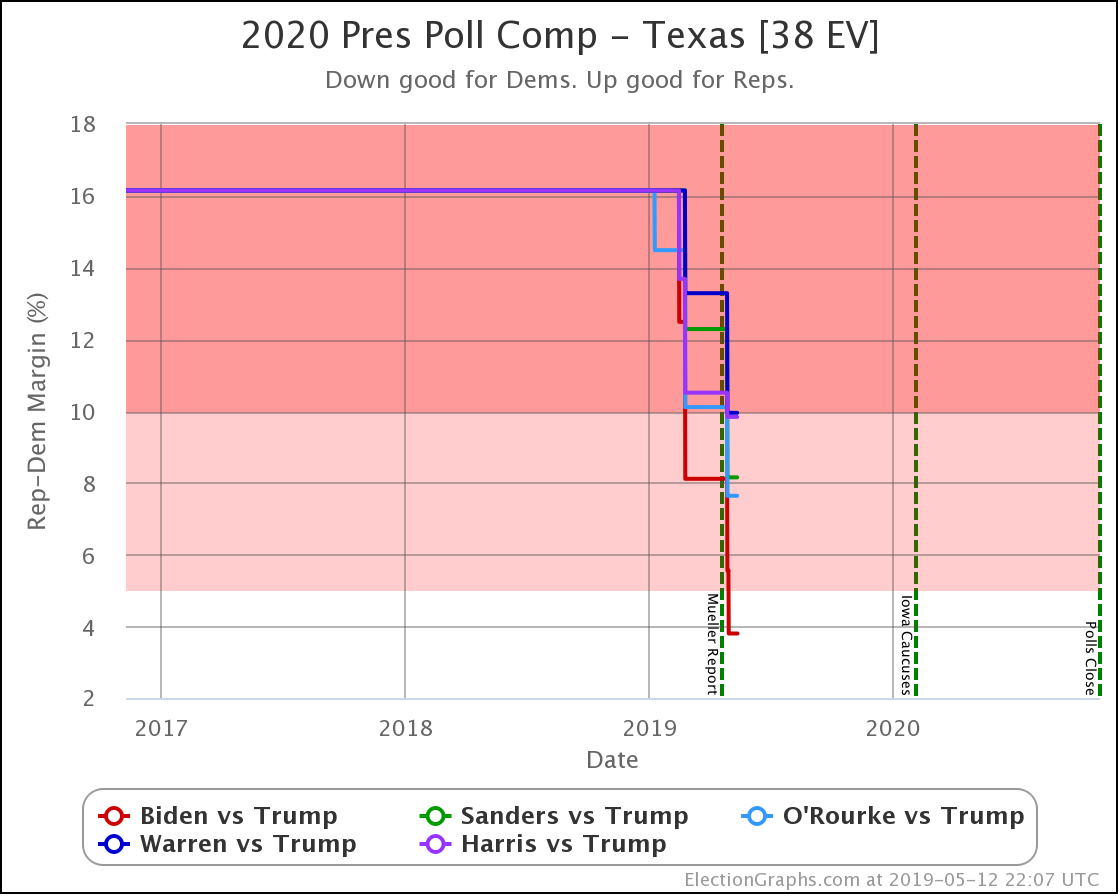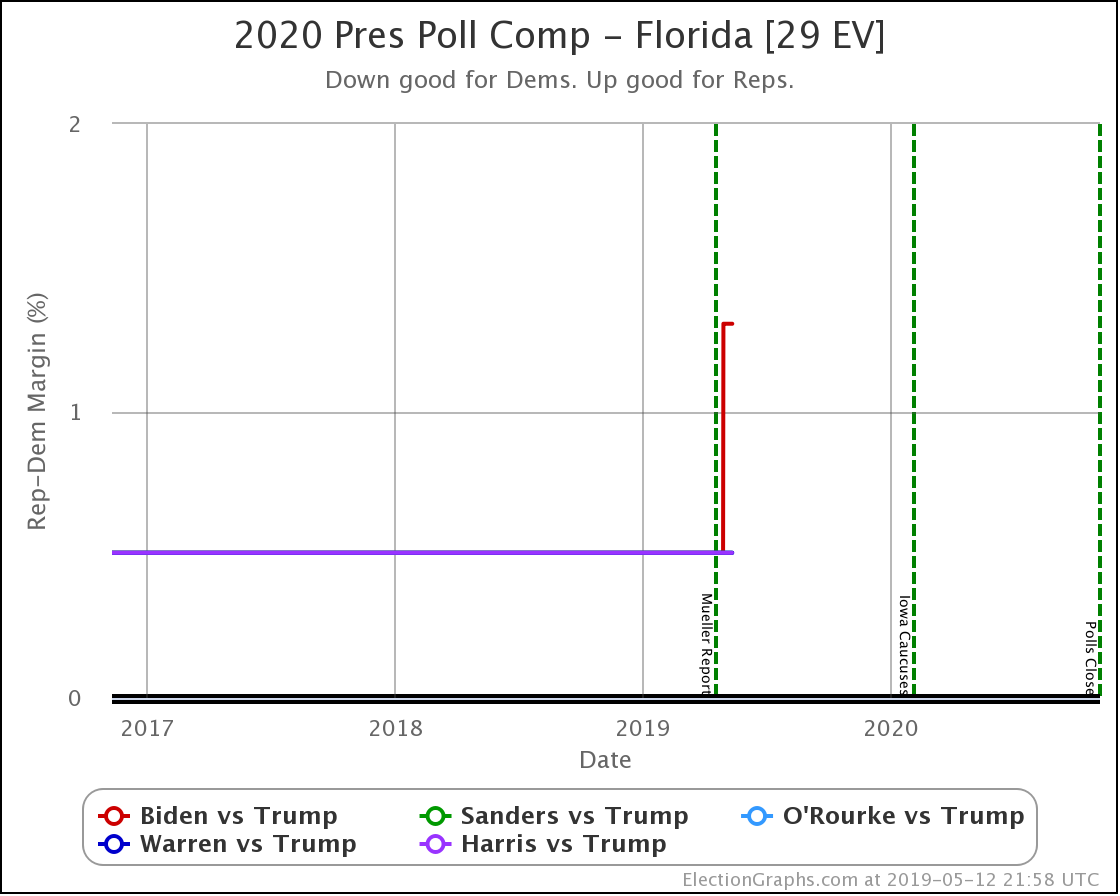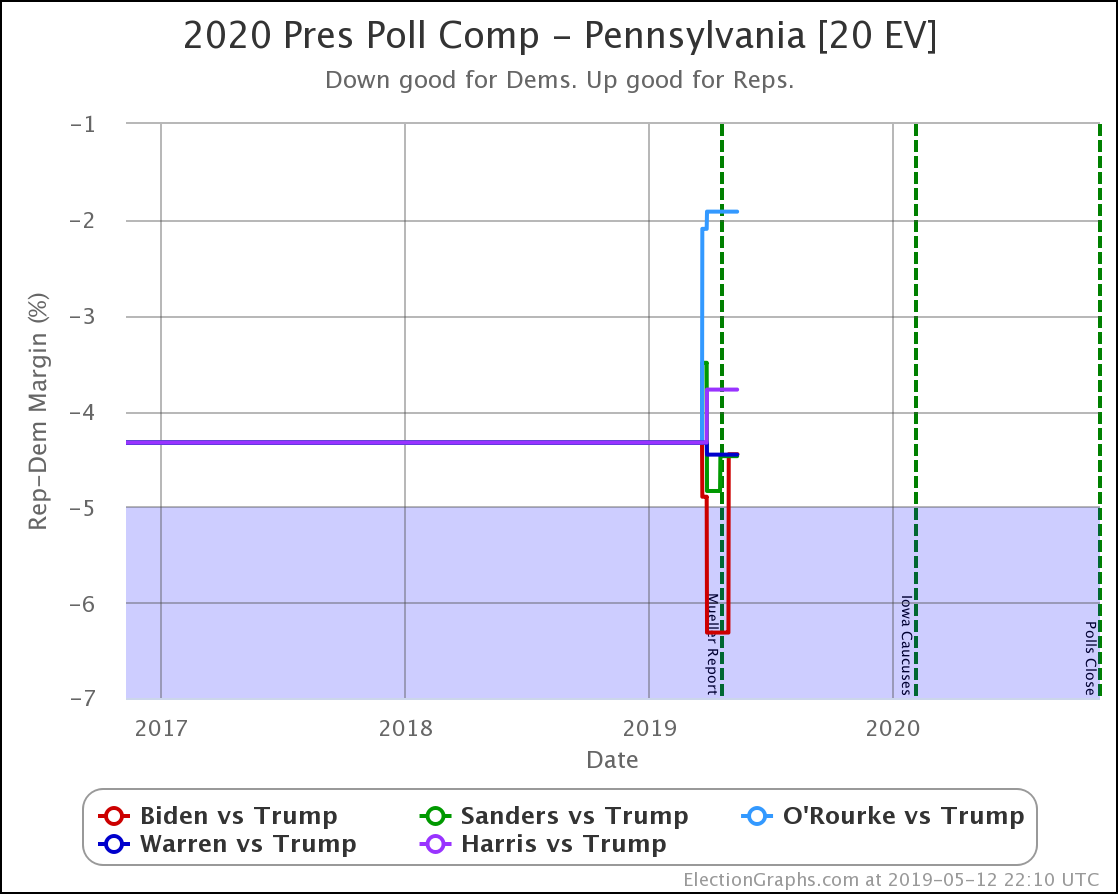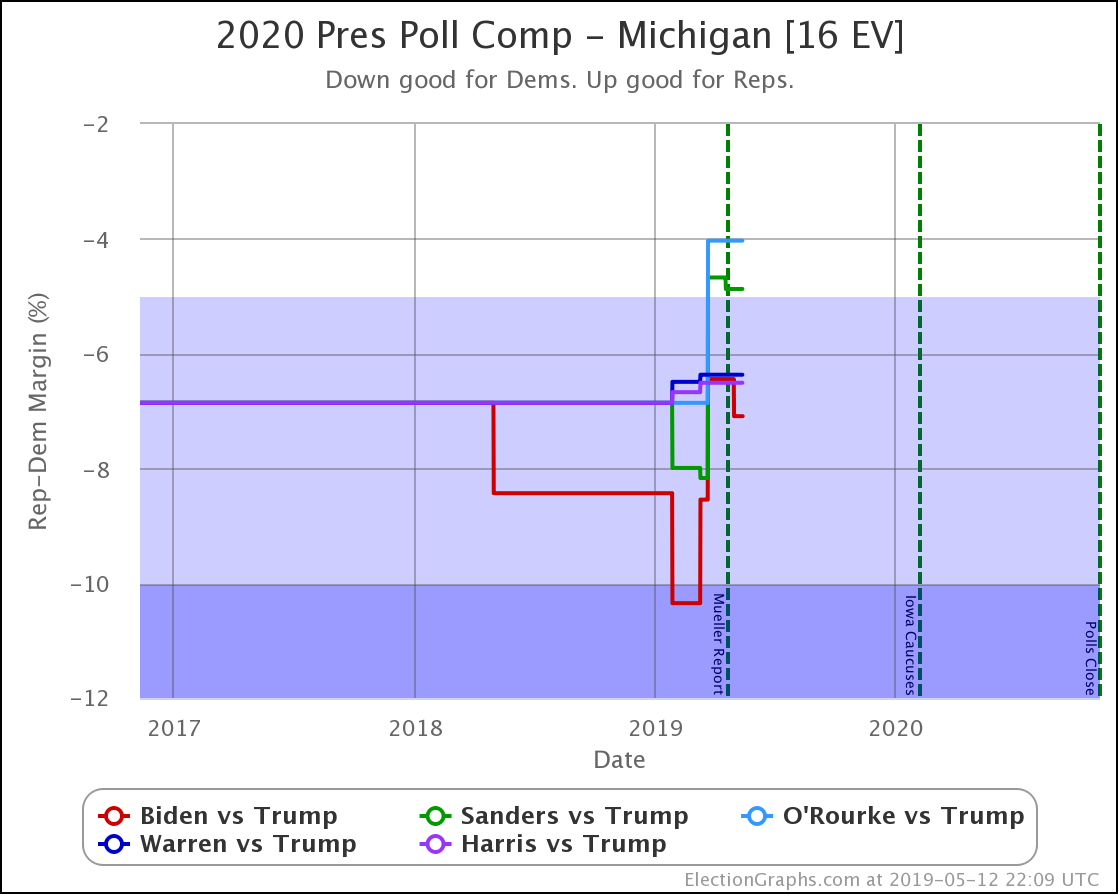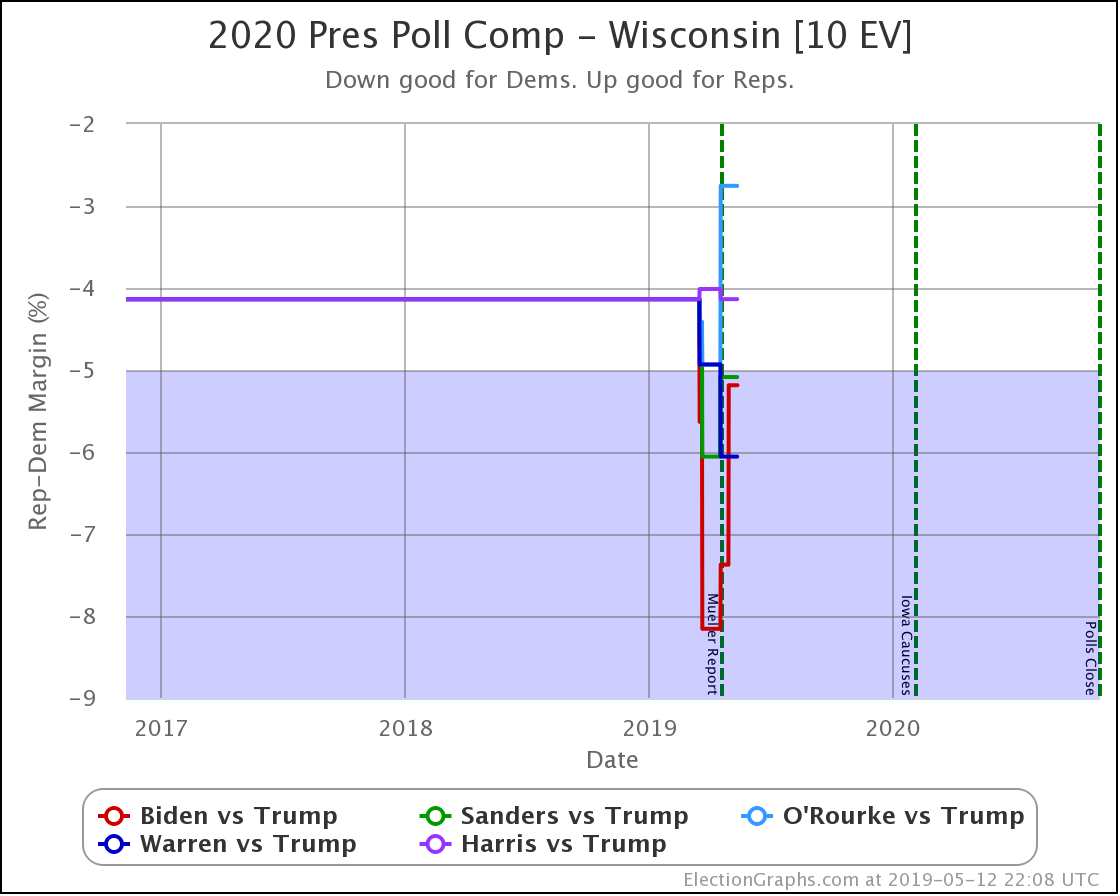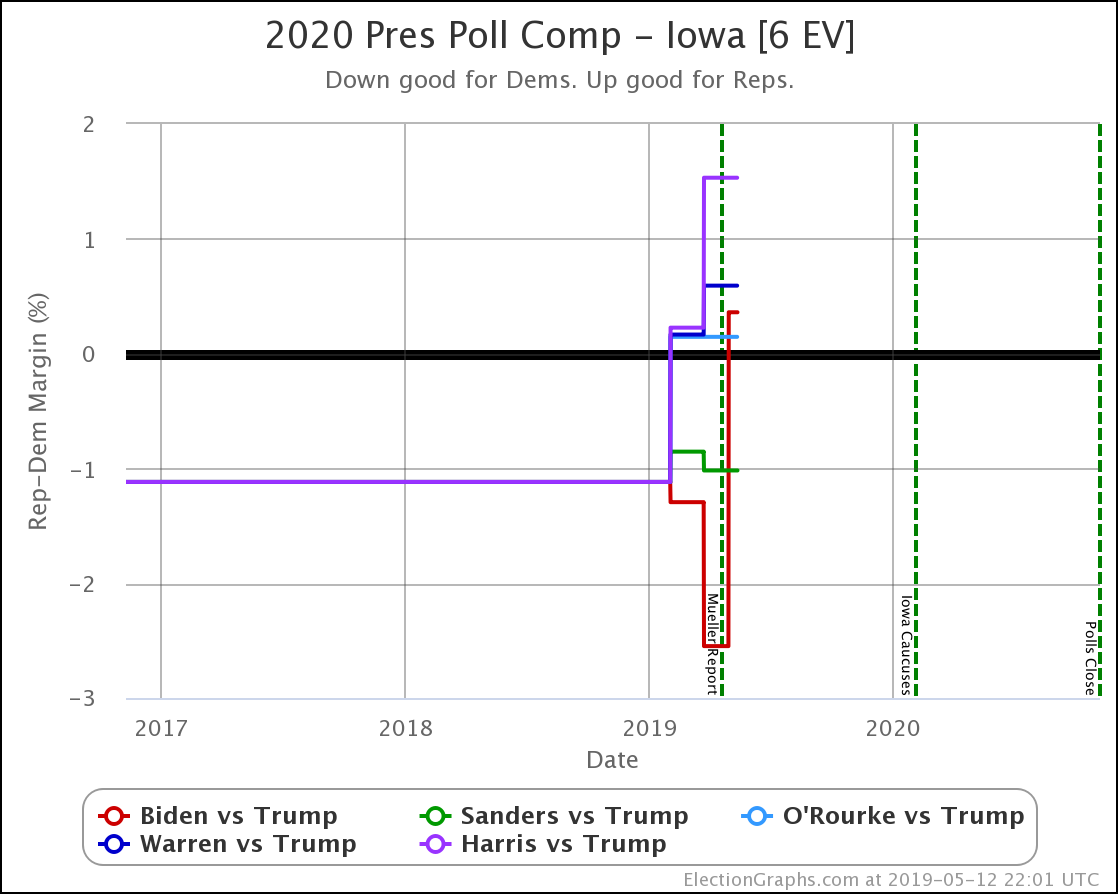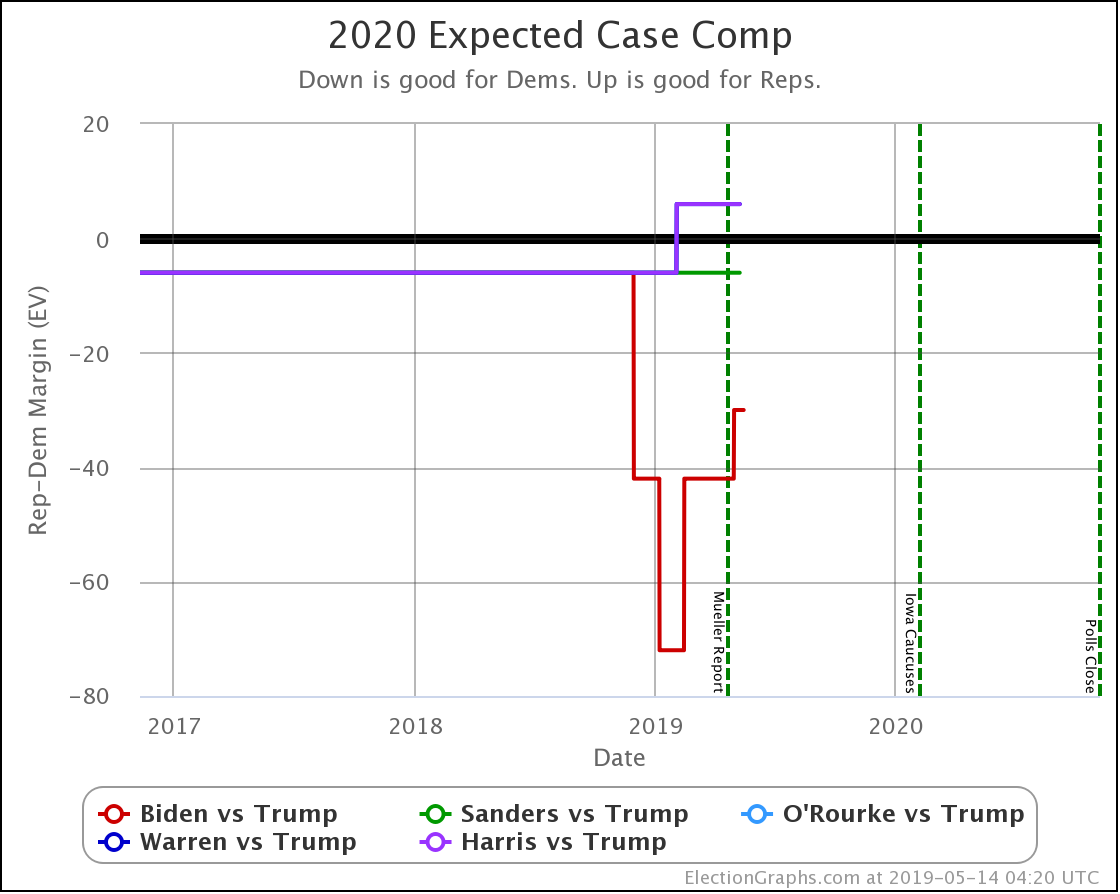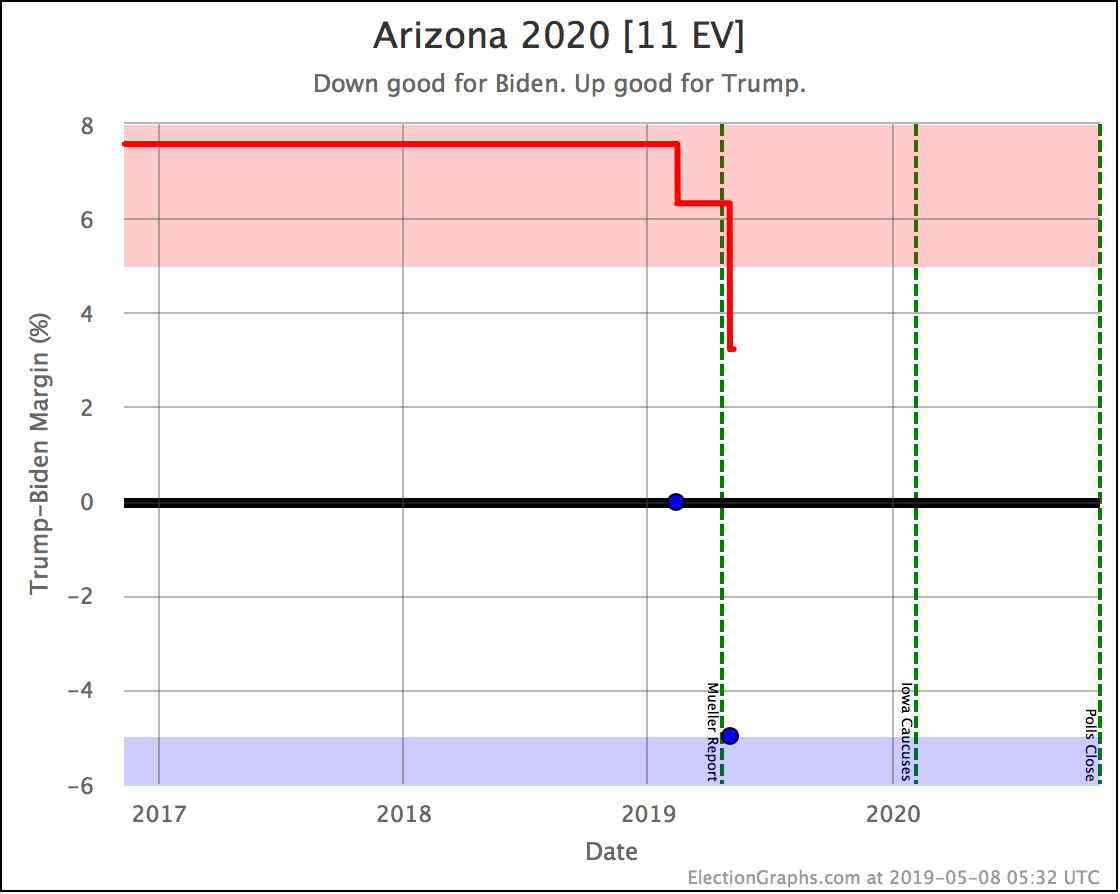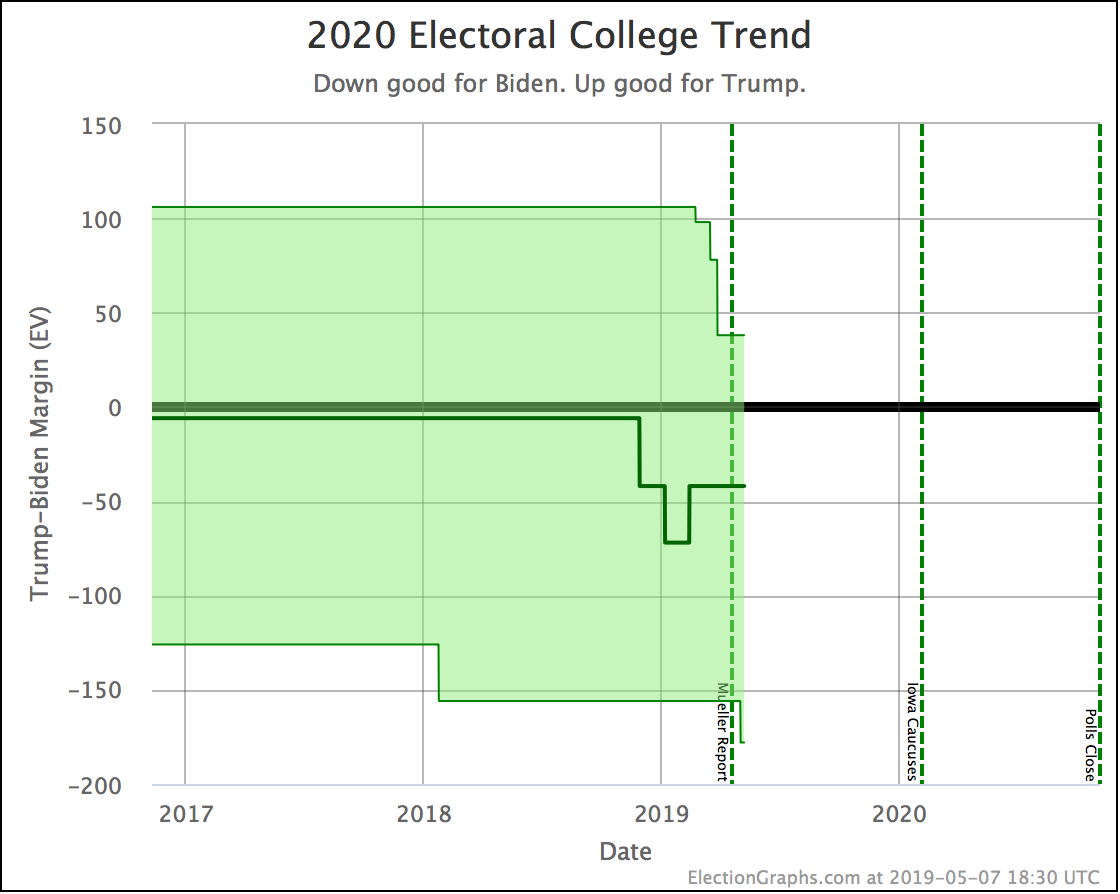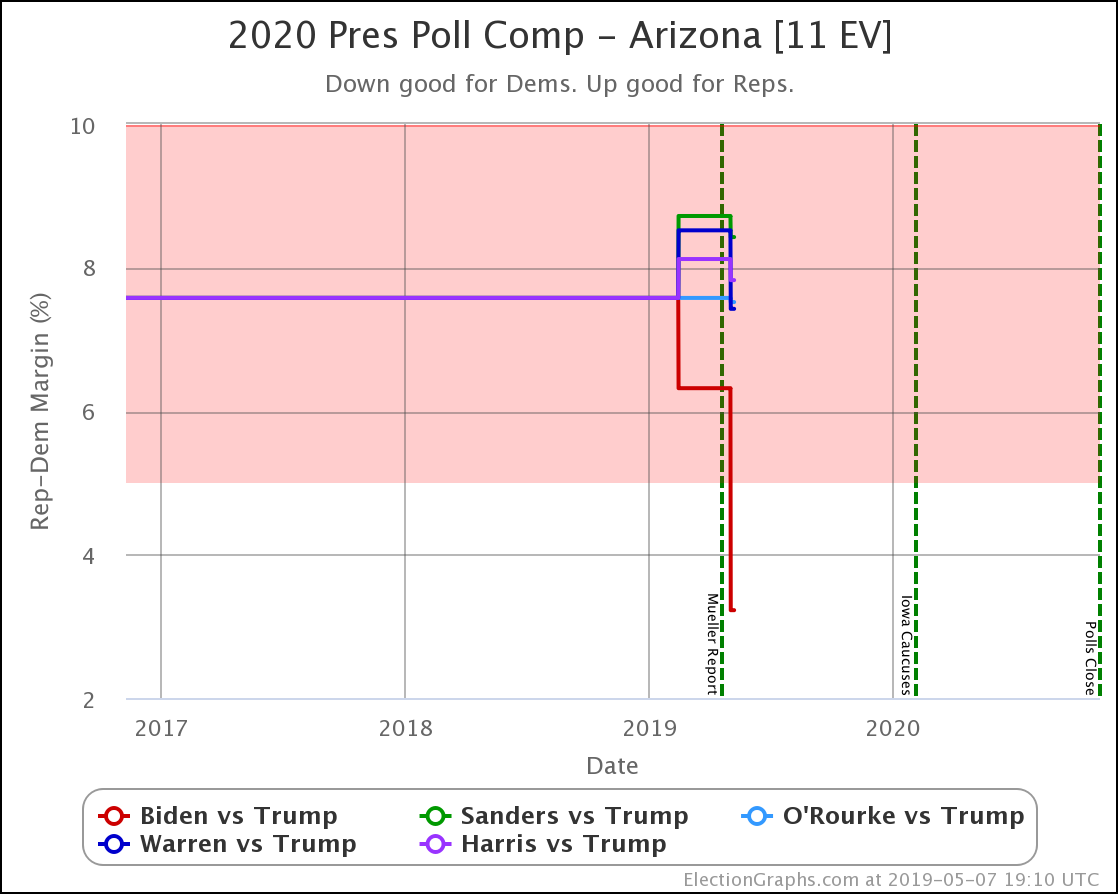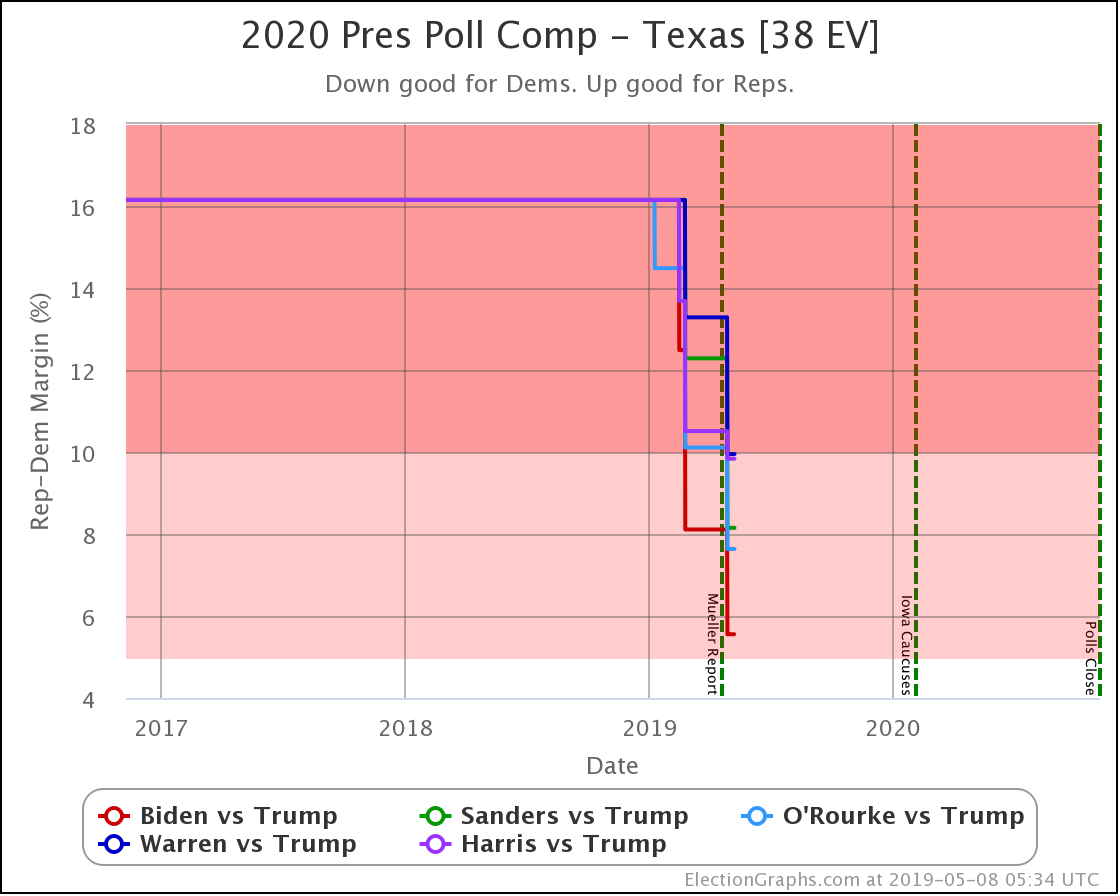Since last week's update, there have been new polls in Nevada, Colorado, and Arizona.
There was only one category change. Biden's poll average in Nevada moved from a 4.5% lead to a 6.2% lead which changed the state from Weak Biden to Strong Biden in the Election Graphs categorizations.
This change drops Trump's best case in the categorization view to a 26 electoral vote win over Biden as Nevada is moved out of the list of potential Trump wins:
The Biden vs. Trump tipping point also shifted from a 3.4% Biden lead in Maine's 2nd congressional district to a 4.9% Biden lead in Virginia.
But taking into account the polling changes in all three states, and looking at the probabilistic model, of the six most polled Democrats against Trump, five improved their odds of winning the electoral college.
The only exception was O'Rourke. None of the new polls included him. Again.
| Dem | 18 Aug | 25 Aug | 𝚫 |
| Biden | 99.7% | 99.9% | +0.2% |
| Sanders | 94.1% | 95.5% | +1.4% |
| O'Rourke | 80.0% | 80.0% | Flat |
| Warren | 67.6% | 71.0% | +3.4% |
| Buttigieg | 63.2% | 67.1% | +3.9% |
| Harris | 62.9% | 65.8% | +2.9% |
The odds favor all of the Democrats over Trump at this point. There is a massive spread between the extremes, however. At the low-end, Harris loses about a third of the simulated elections to Trump. Meanwhile at the high-end Biden looks very solid indeed with that 99.9%.
As usual, disclaimers are essential. What we see NOW may not resemble what things look like by the time we get to the Iowa caucuses, let alone by the time we get to Election Day 2020.
Although as every day passes, this is less true, many people still are not paying close attention to this contest, and many people don't know much about Harris and Buttigieg and some of the others. Name recognition and the intensity of the coverage does matter, and that will all ramp up as voting approaches.
Perhaps even more importantly, the general election campaign itself won't go into full swing until it looks like the winning candidates on both sides are inevitable, and that will make a huge difference. For instance, I would be surprised to see that 99.9% for Biden survive contact with an all-out assault from the Republican side.
With that said, let's look at the three states individually:
Biden is the only candidate breaking out in Arizona. The polling average still shows a Trump lead, but the three actual 2020 polls so far show one tie and two Biden leads. The state is held on the red side by the Republican wins in 2012 and 2016. At the very least though, it is clear that Biden puts Arizona into contention.
Warren's poll average has also improved a little bit on the 2000-2016 average Republican win margin of 7.6%, but she has yet to show a single poll with her leading Trump.
The other four have barely moved the needle. And Sanders and Harris are doing worse in Arizona than the historical average.
The difference between Biden and the others is even starker when you look at the chart showing the odds of winning Arizona:
Biden is now up to a 31.8% chance of winning Arizona. The other five candidates range from an 0.3% chance (Sanders) to a 1.8% chance (Warren).
Unlike Texas, where it looks like all the Democrats are making the state look bluer, Arizona is much more selective.
The Emerson poll this week is the very first Colorado polling for 2020. Biden, Sanders, Warren, and Buttigieg all lead Trump by more than 5% in the new poll. Harris leads by a narrower 3%.
In all of these cases, the average drops significantly in the blue direction, because it is the 2000 election results that are falling off the average, where the Republican won by an 8.4% margin.
One poll is not enough to move the state out of the "Weak Democrat" category though. But if the next Colorado results are similar to these, the next election to drop off the average will be the 4.7% Republican win in 2004 and the state will probably move to "Strong Democrat" at that point.
Looking at the odds view though, you can see that even the move from this one new poll makes a big difference. With just the average of the last five elections as the poll average, we put the Democratic chance of winning Colorado at 58.4%. An advantage, but just barely.
With this first 2020 poll, excluding O'Rourke since no pollster included him, the Democrats range from an 81.2% chance of winning the state (Harris) to a 90.9% chance (Biden).
All the Democrats improved their averages in Nevada except for Buttigieg.
Biden is the standout, moving into "Strong Biden" territory, with his 6.2% margin translating into a 94.8% win chance. The other Democrats range from a 70.6% chance to win (Warren) to an 88.2% chance to win (Sanders).
And that is where we are this week.
436.1 days until polls start to close.
For more information:
This post is an update based on the data on the Election Graphs Electoral College 2020 page. Election Graphs tracks a poll-based estimate of the Electoral College. The charts, graphs, and maps in the post above are all as of the time of this post. Click through on any image to go to a page with the current interactive versions of that chart, along with additional details.
Follow @ElectionGraphs on Twitter or Election Graphs on Facebook to see announcements of updates. For those interested in individual poll updates, follow @ElecCollPolls on Twitter for all the polls as I add them. If you find the information in these posts informative or useful, please consider visiting the donation page.


